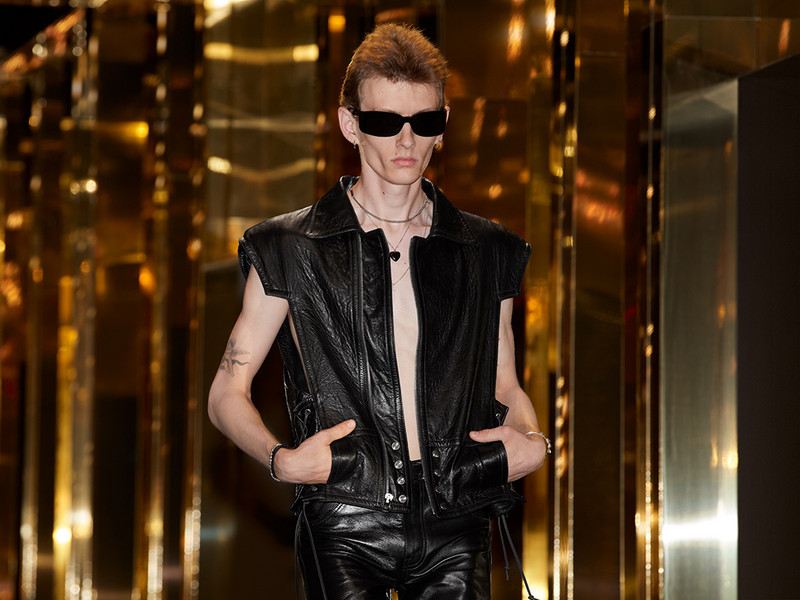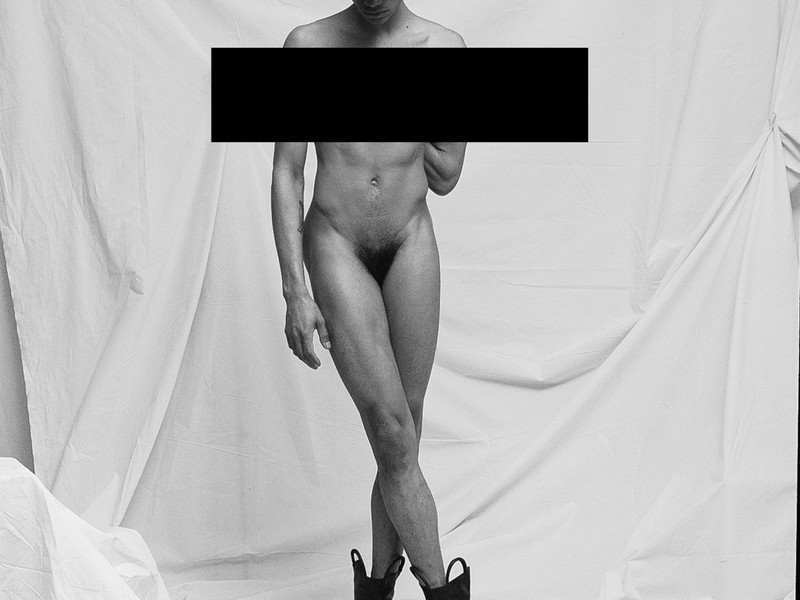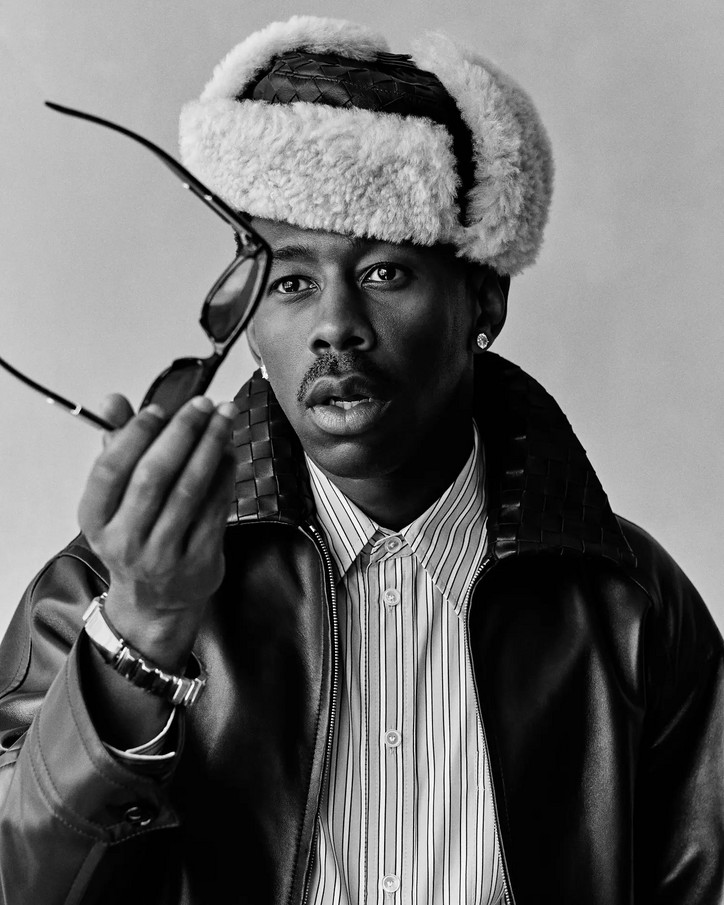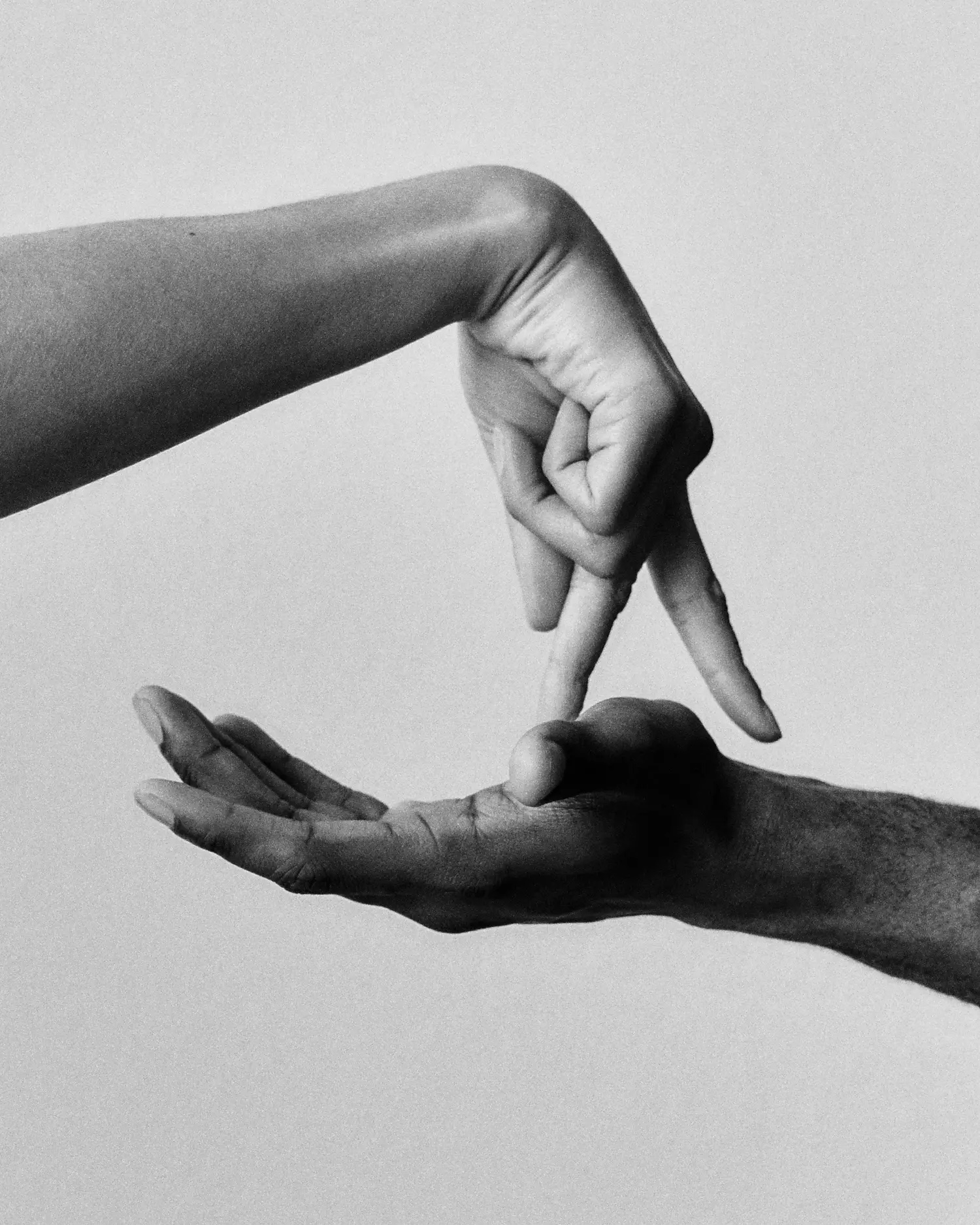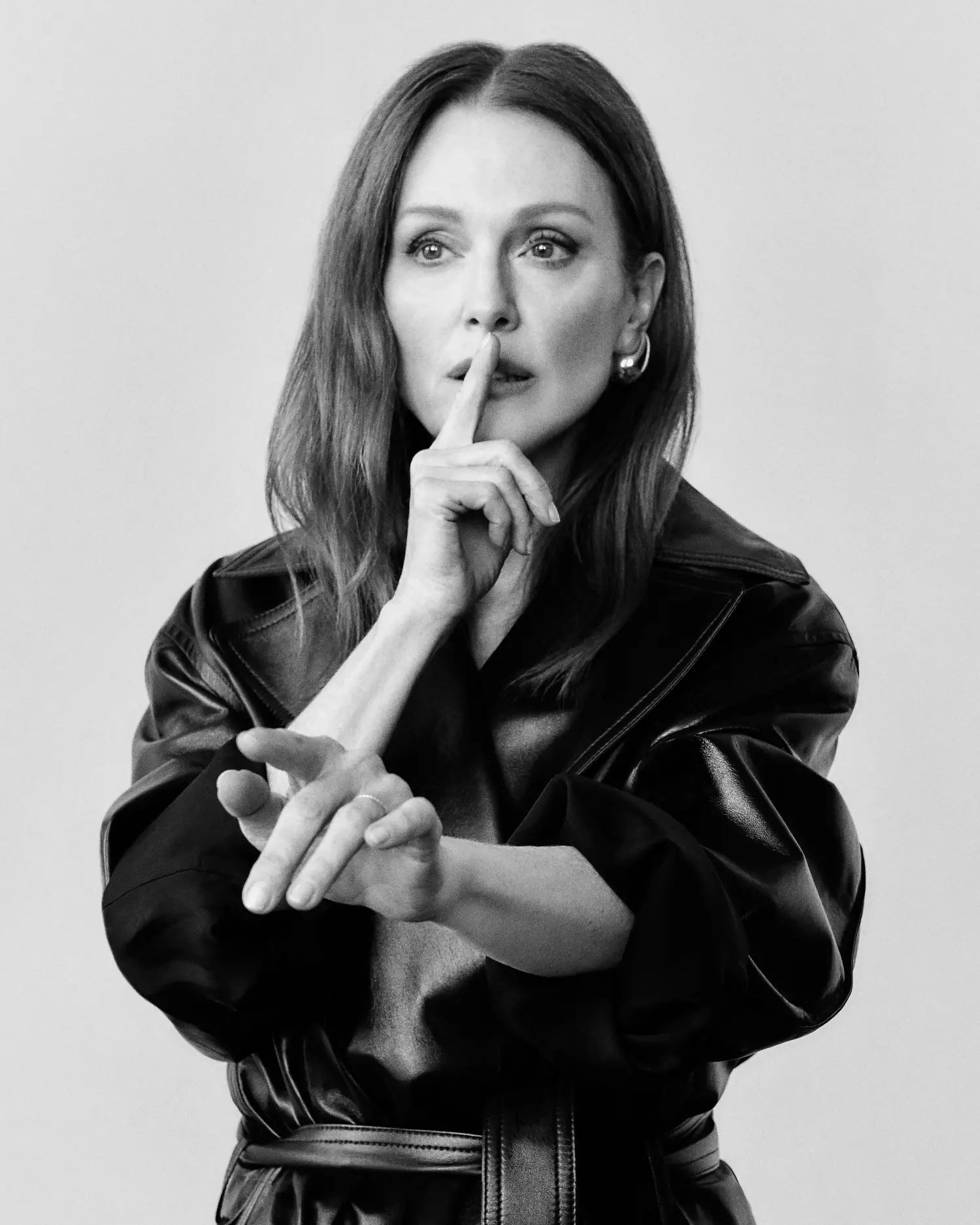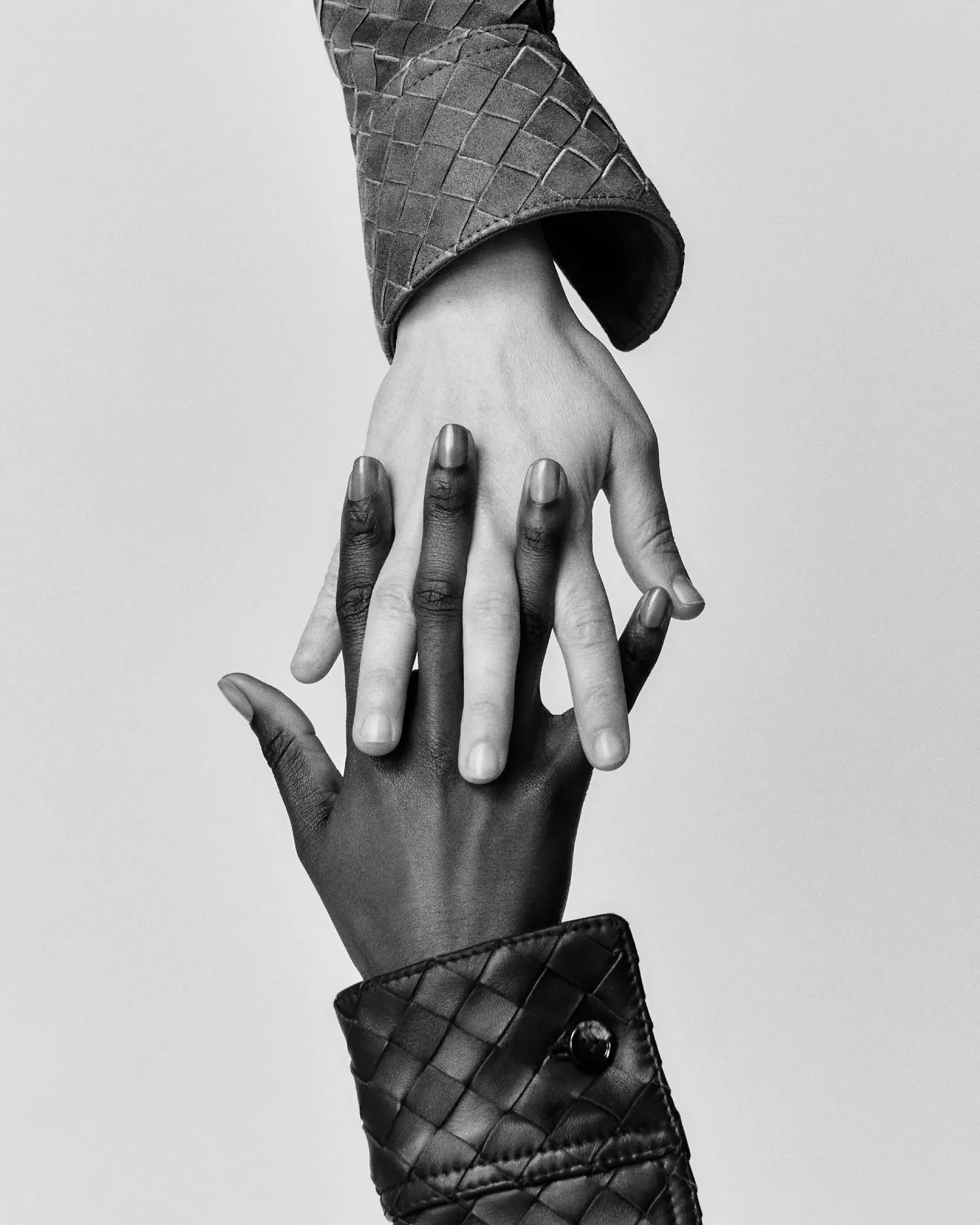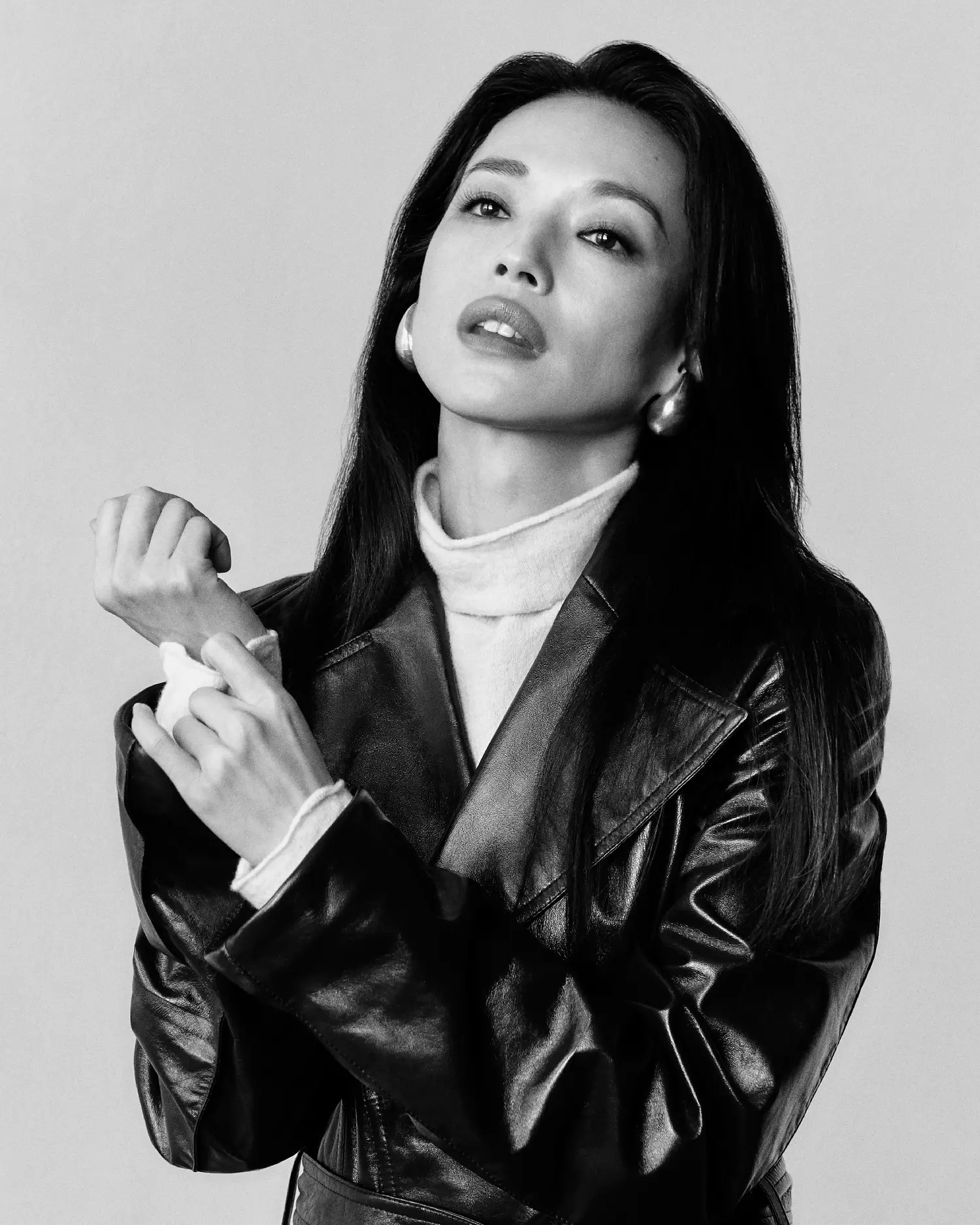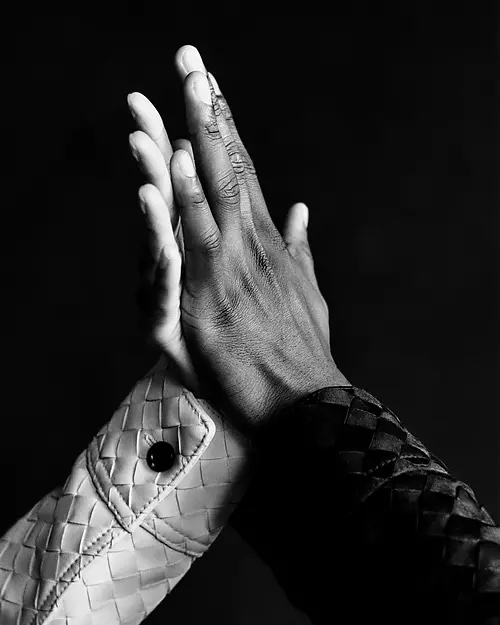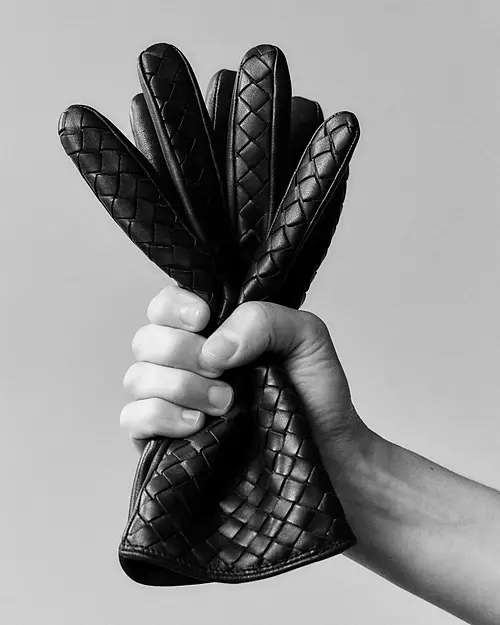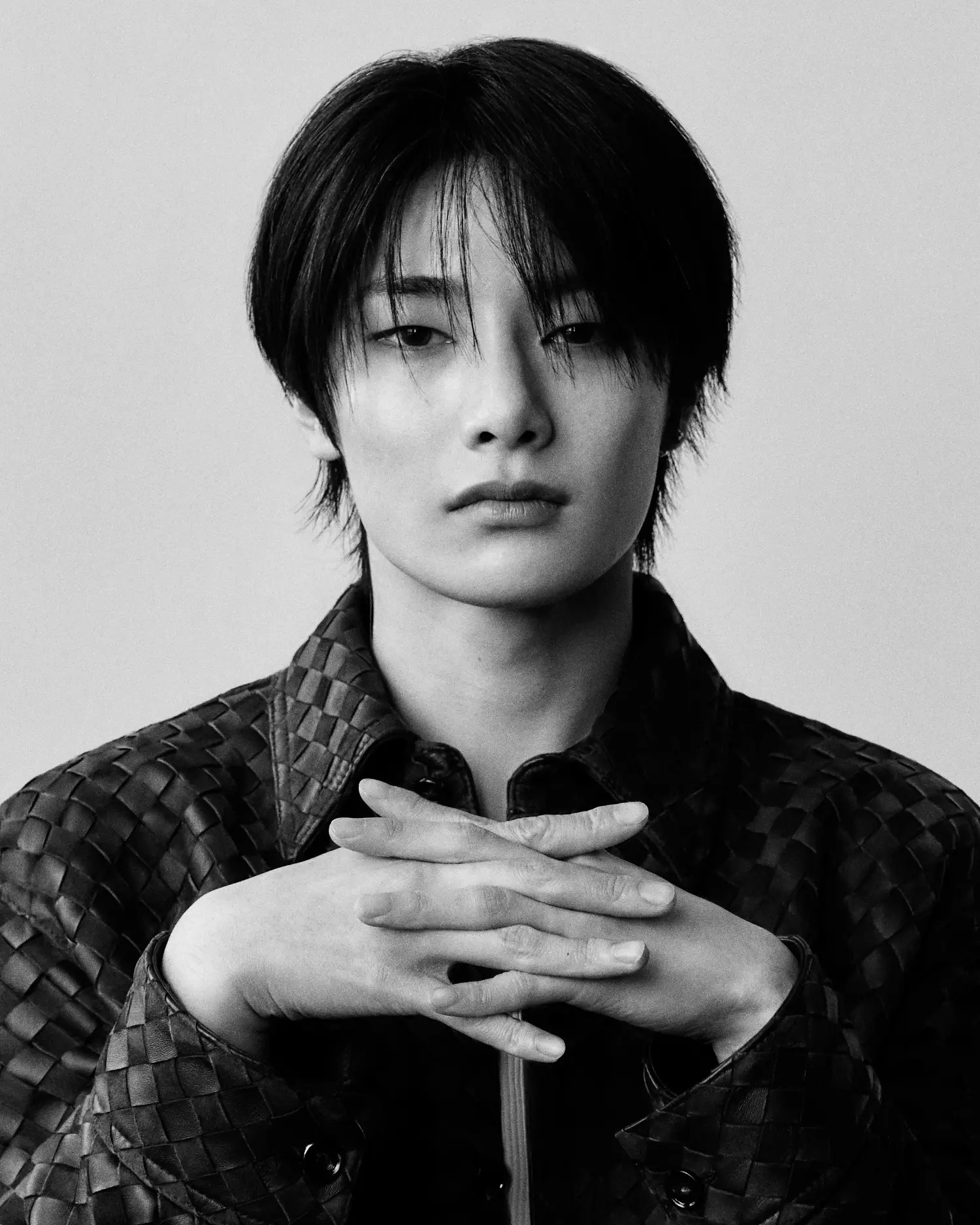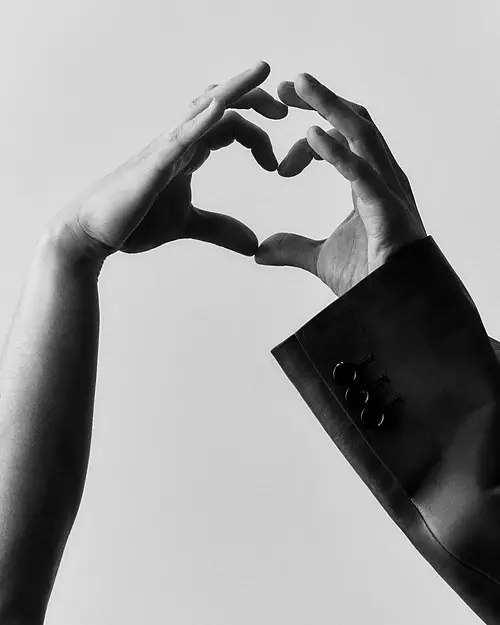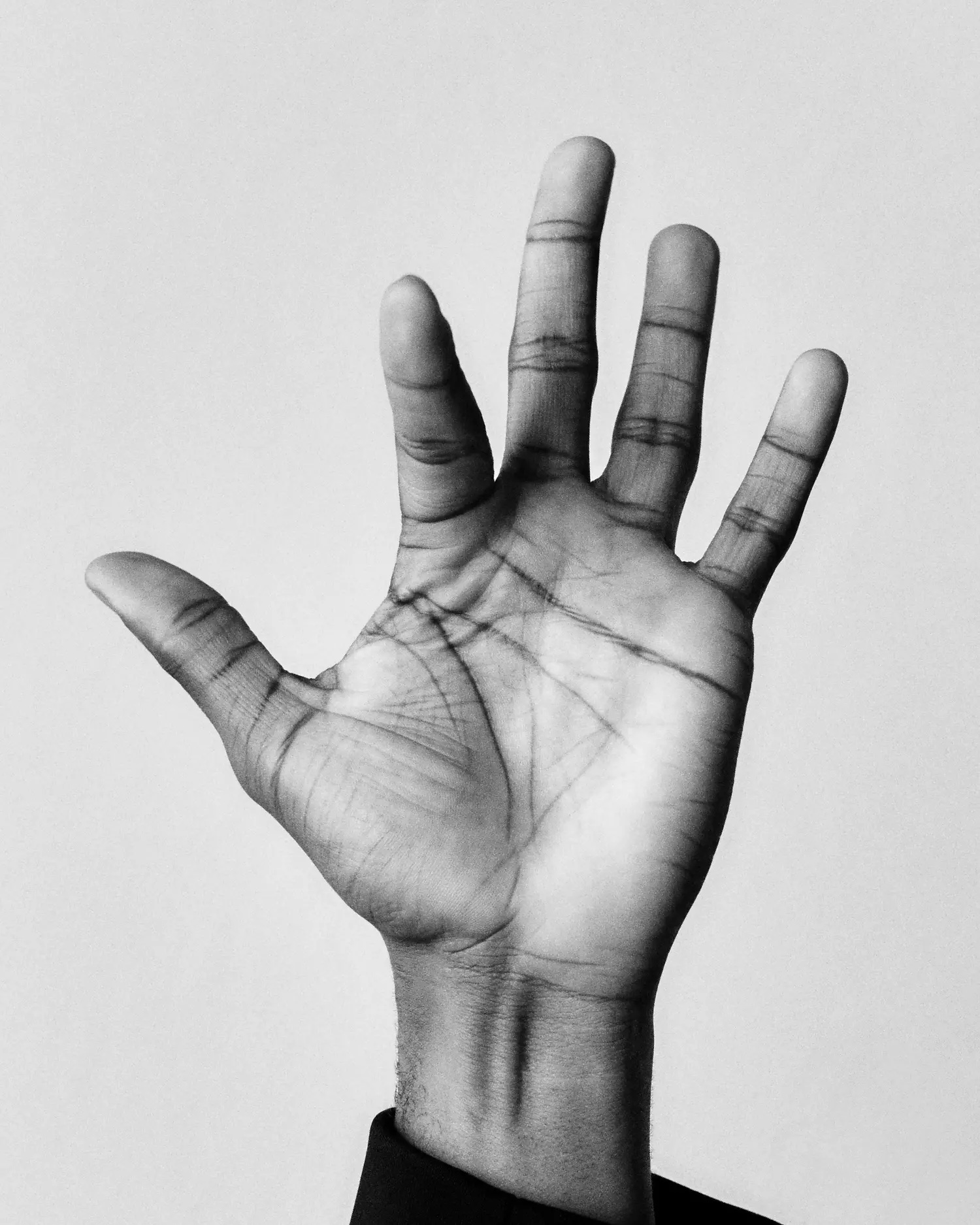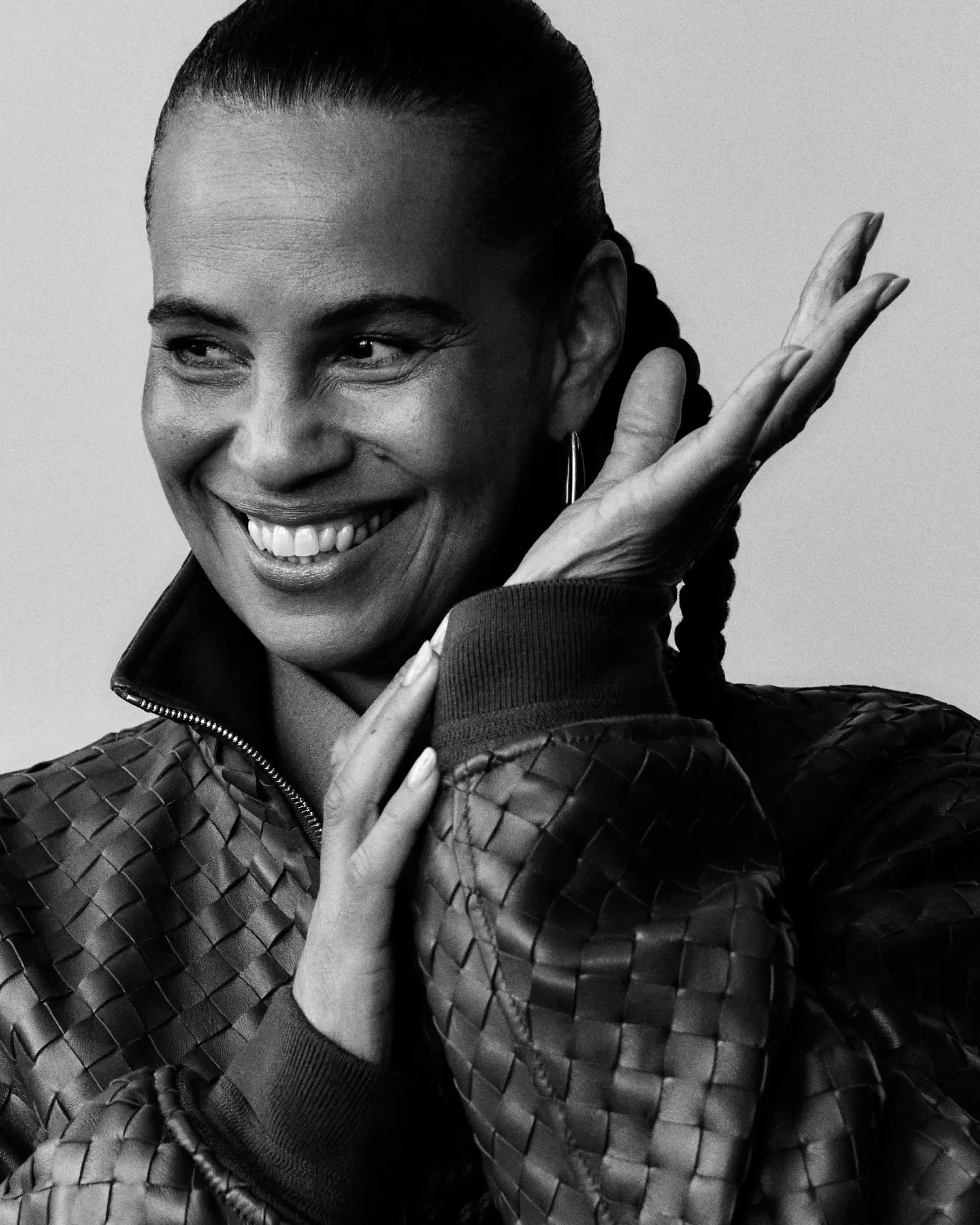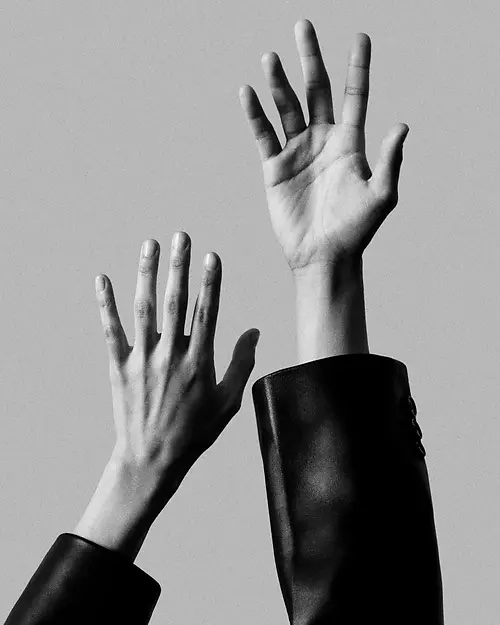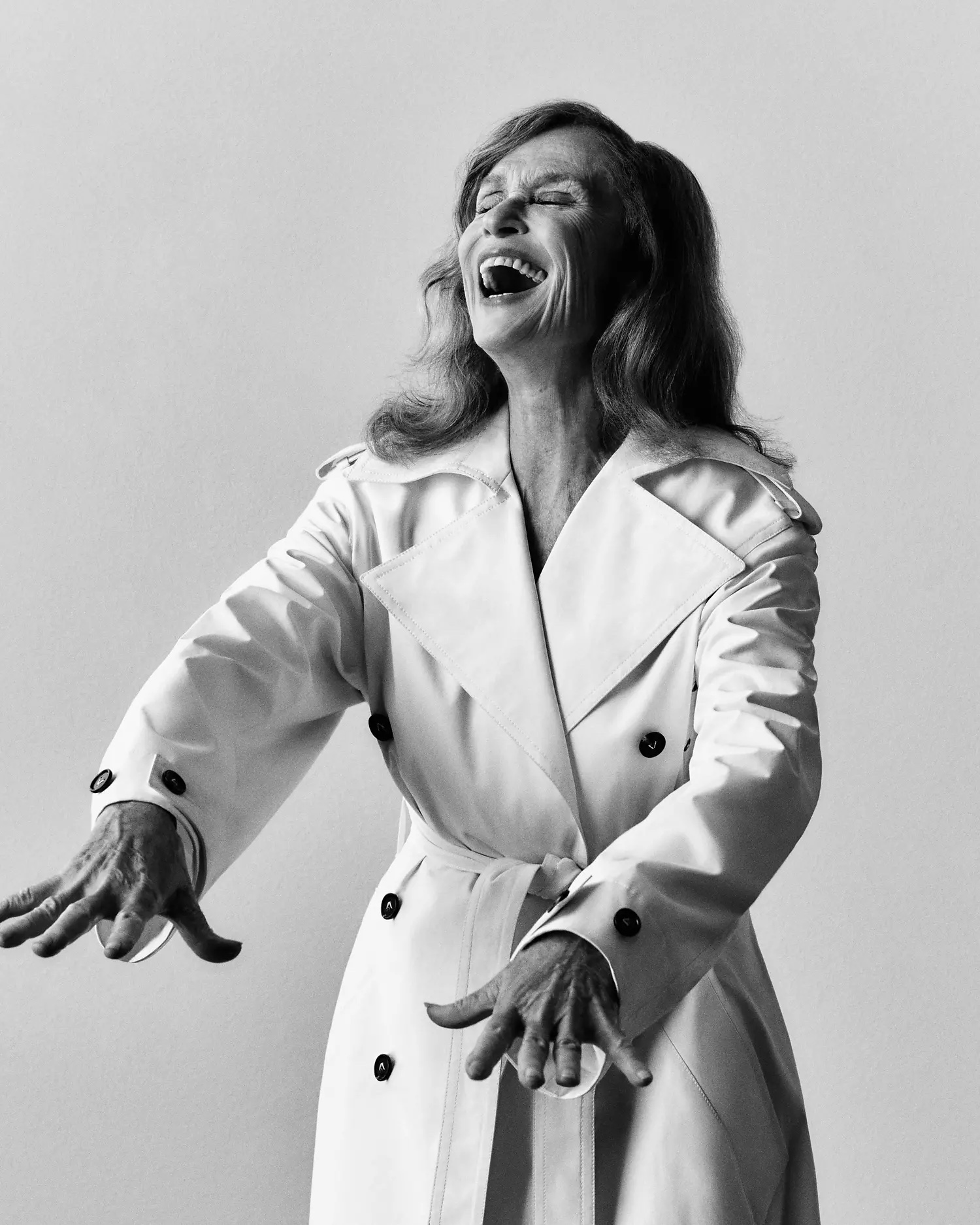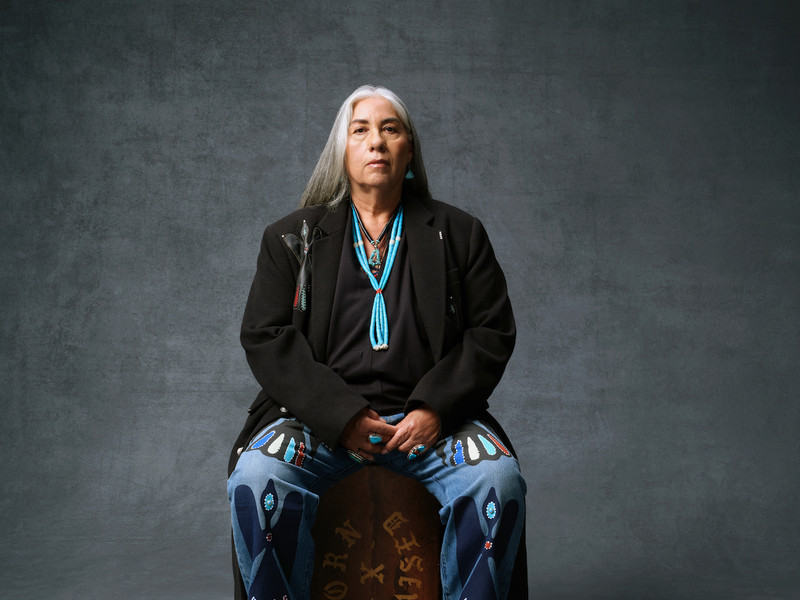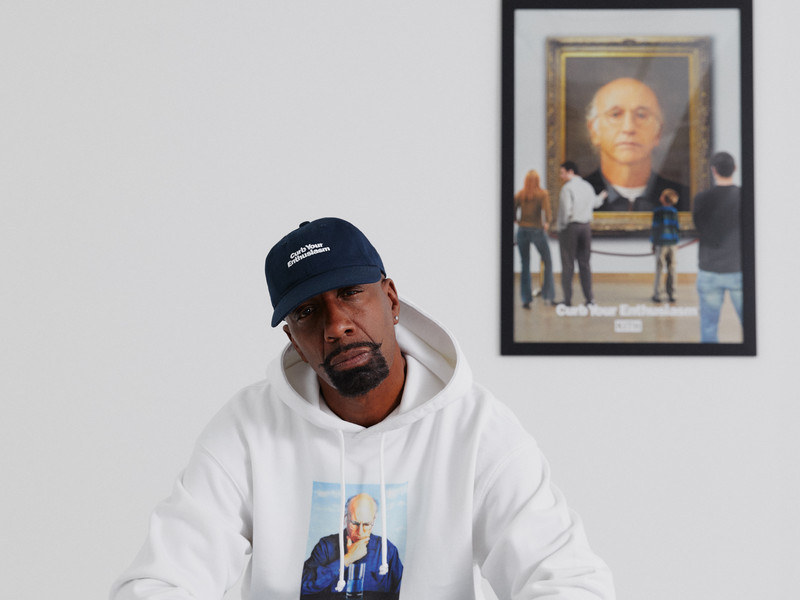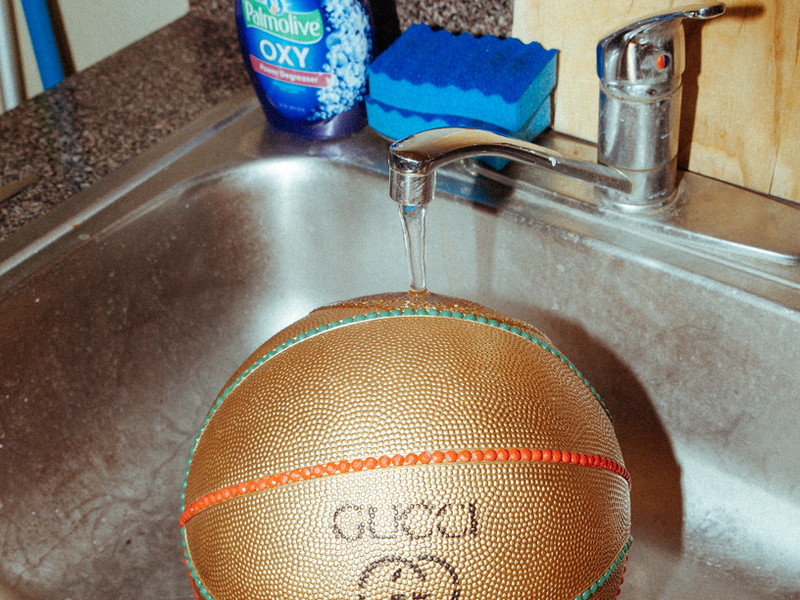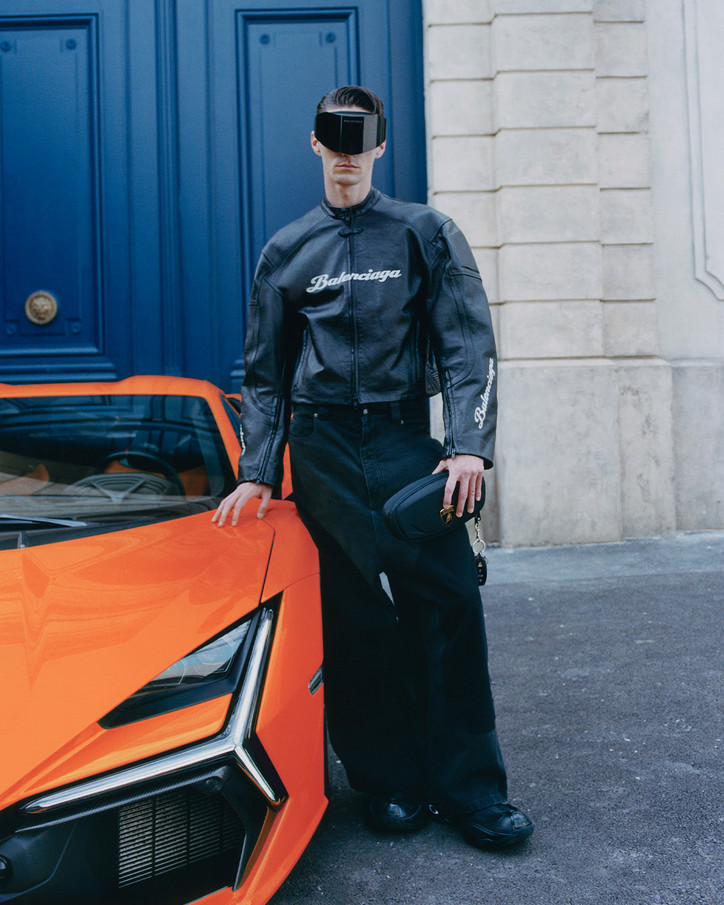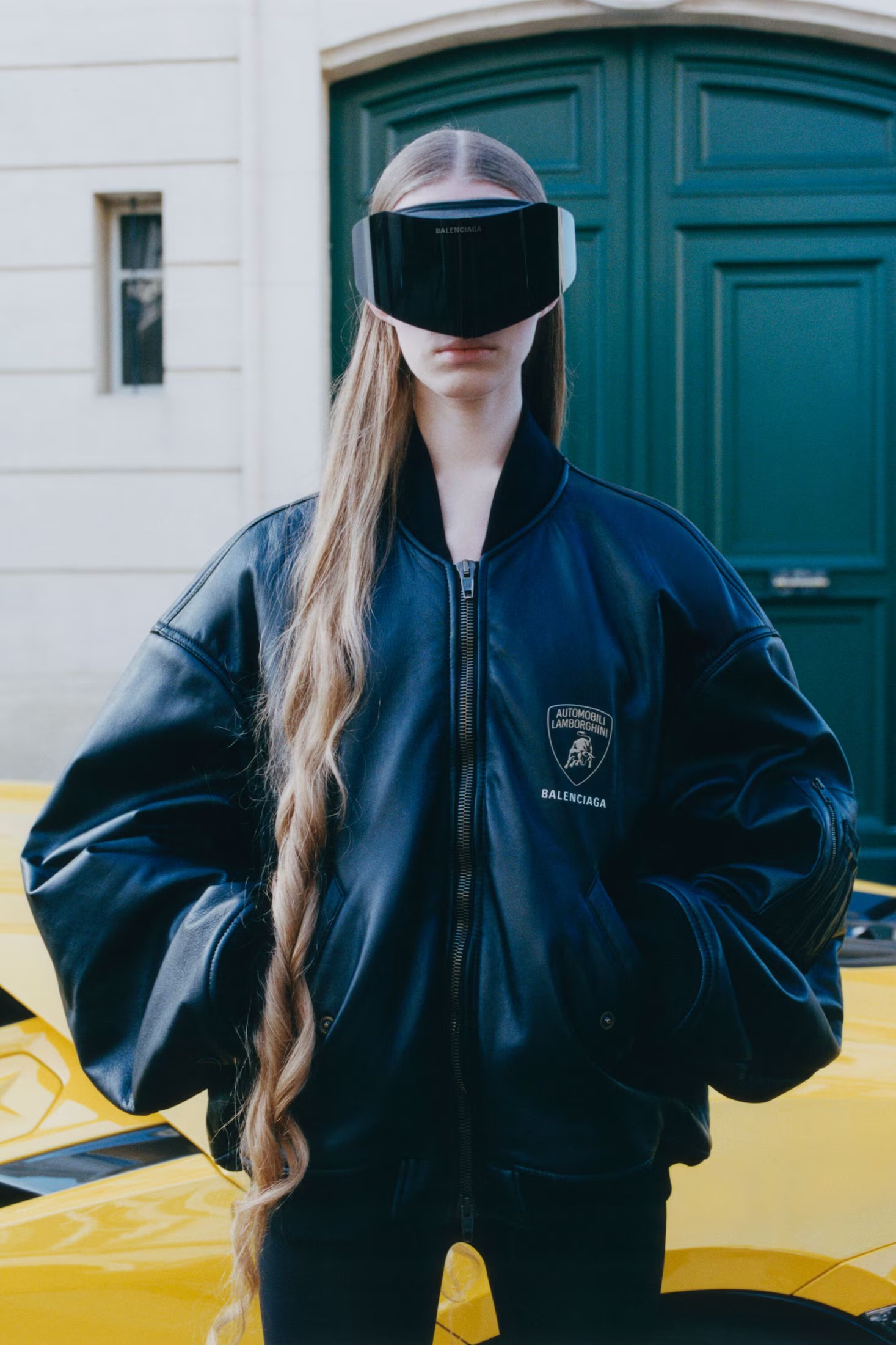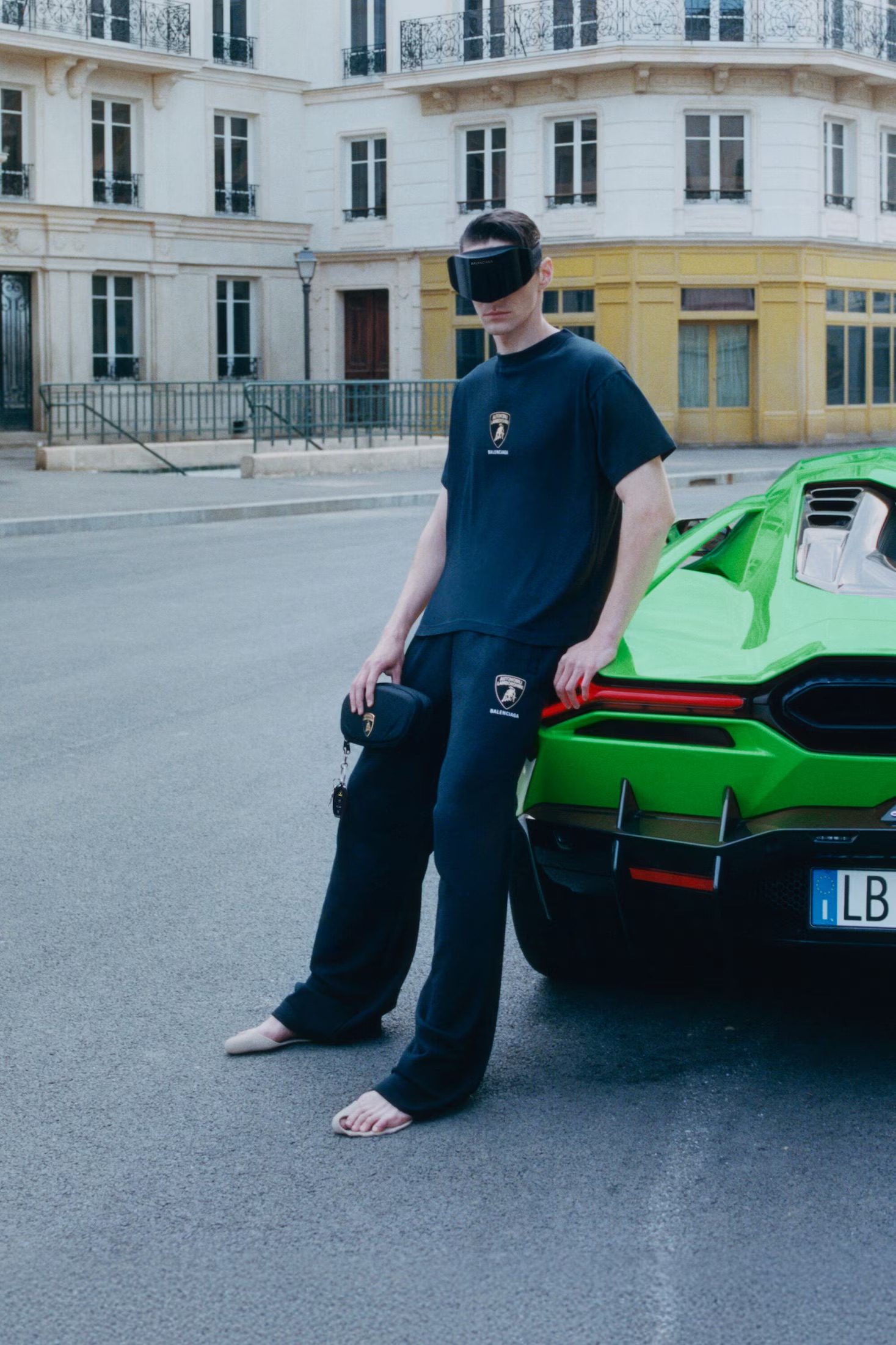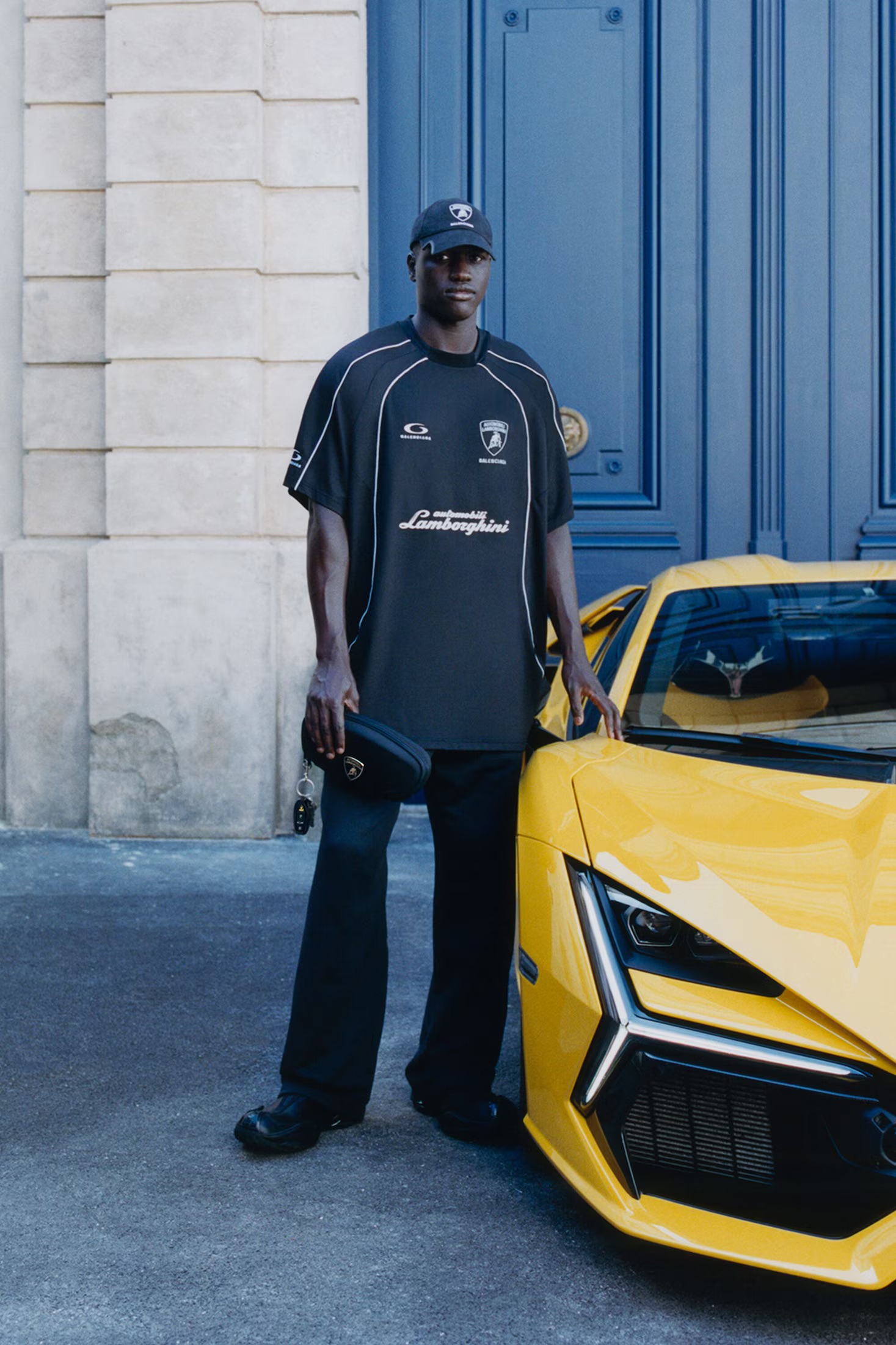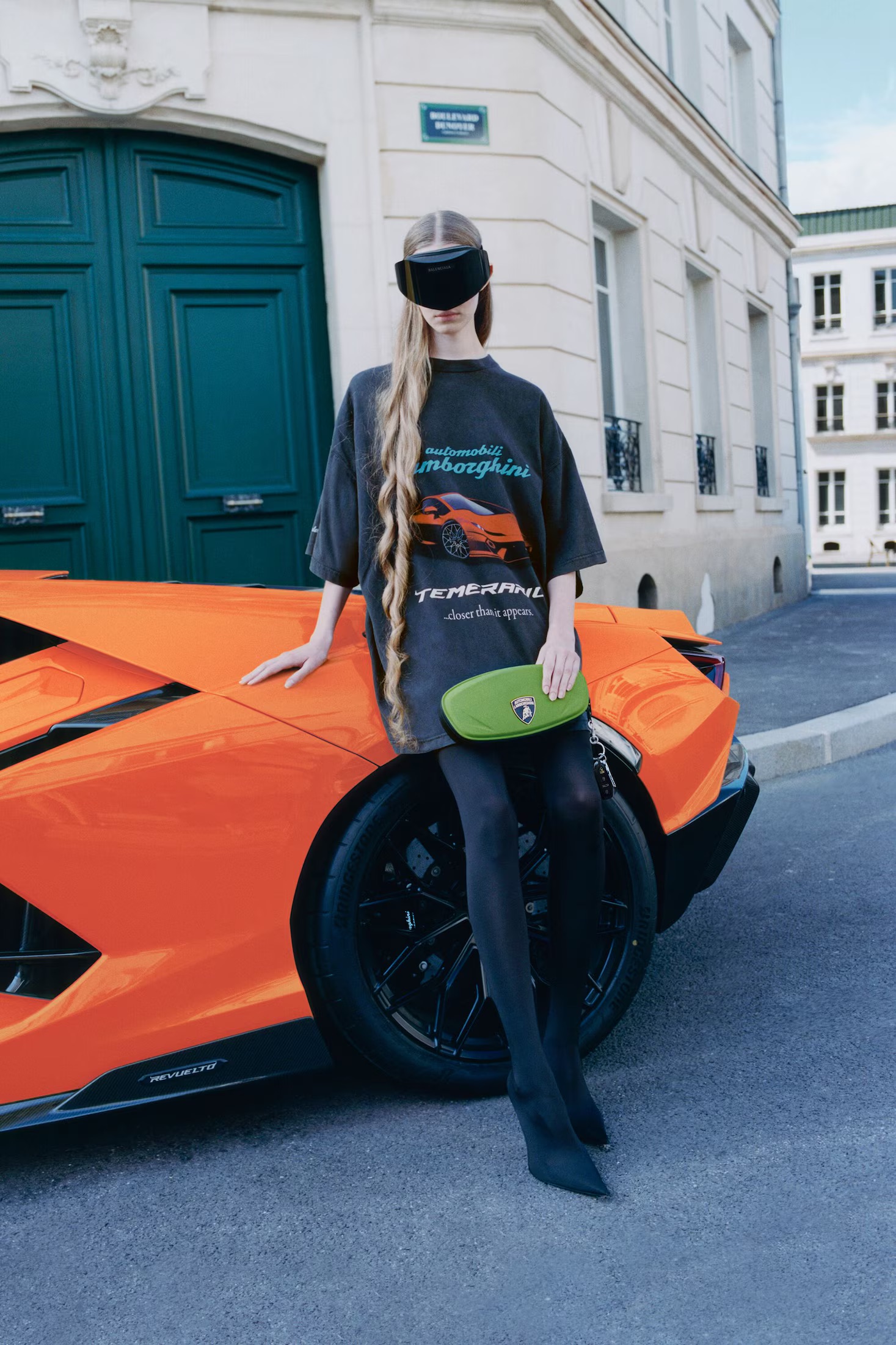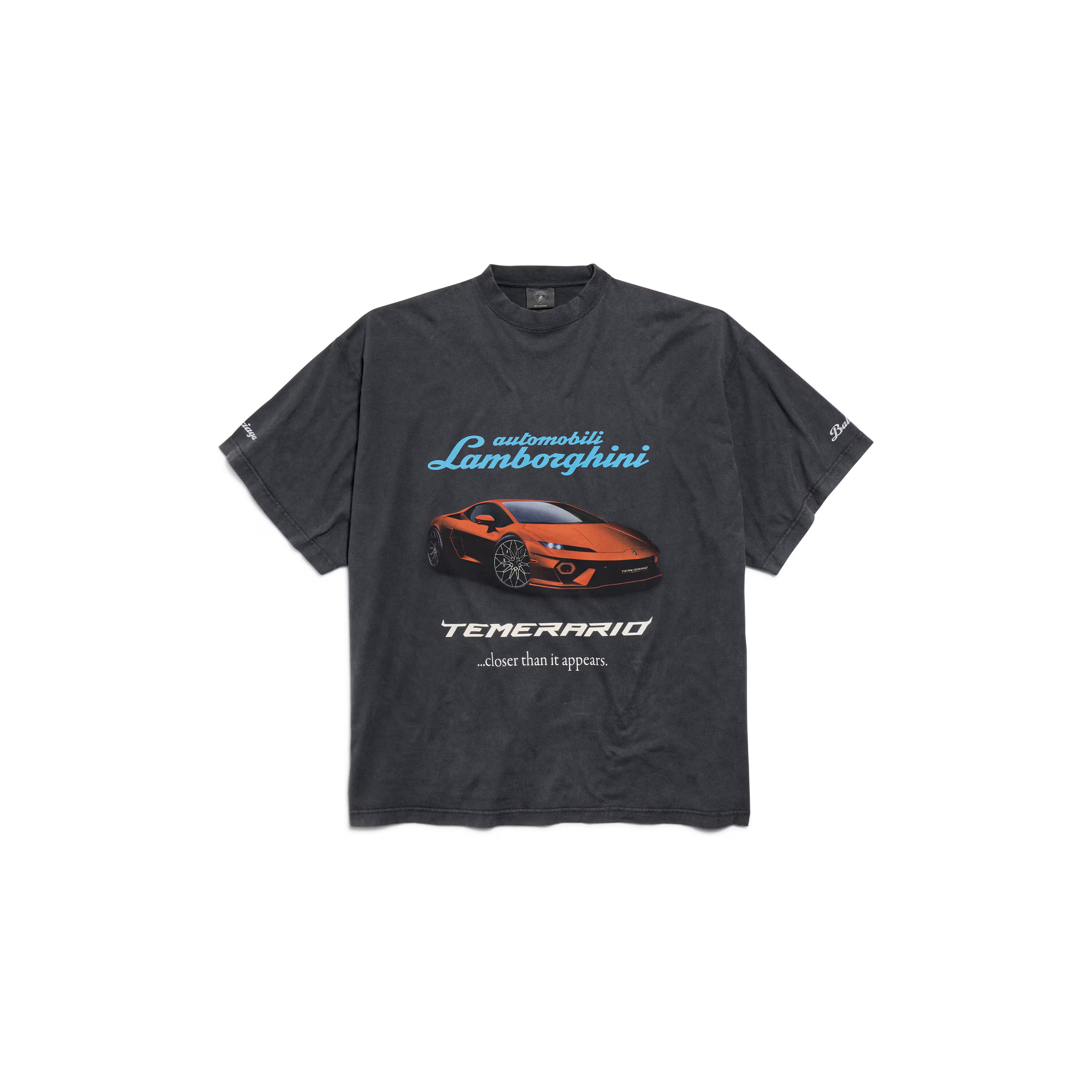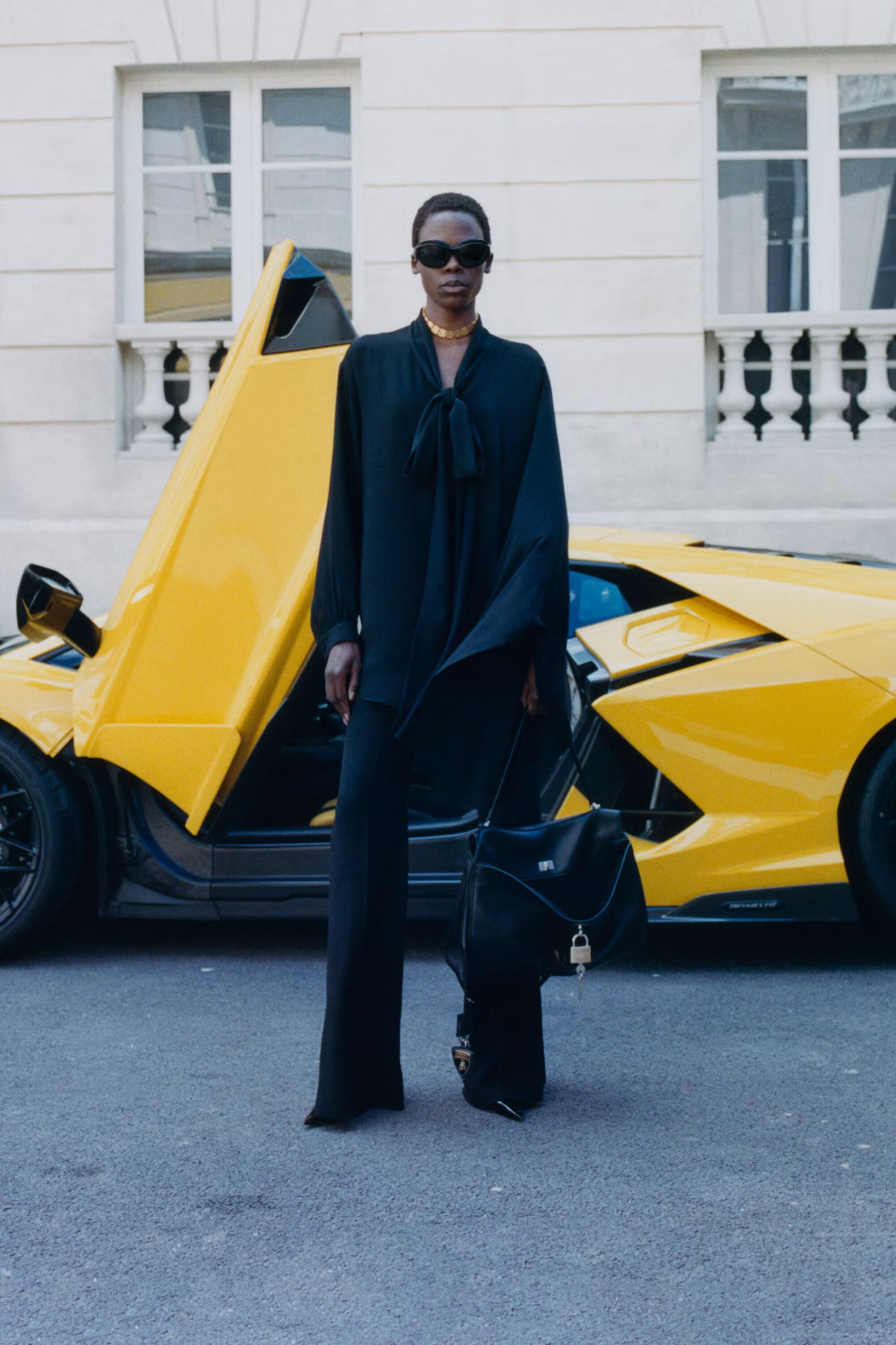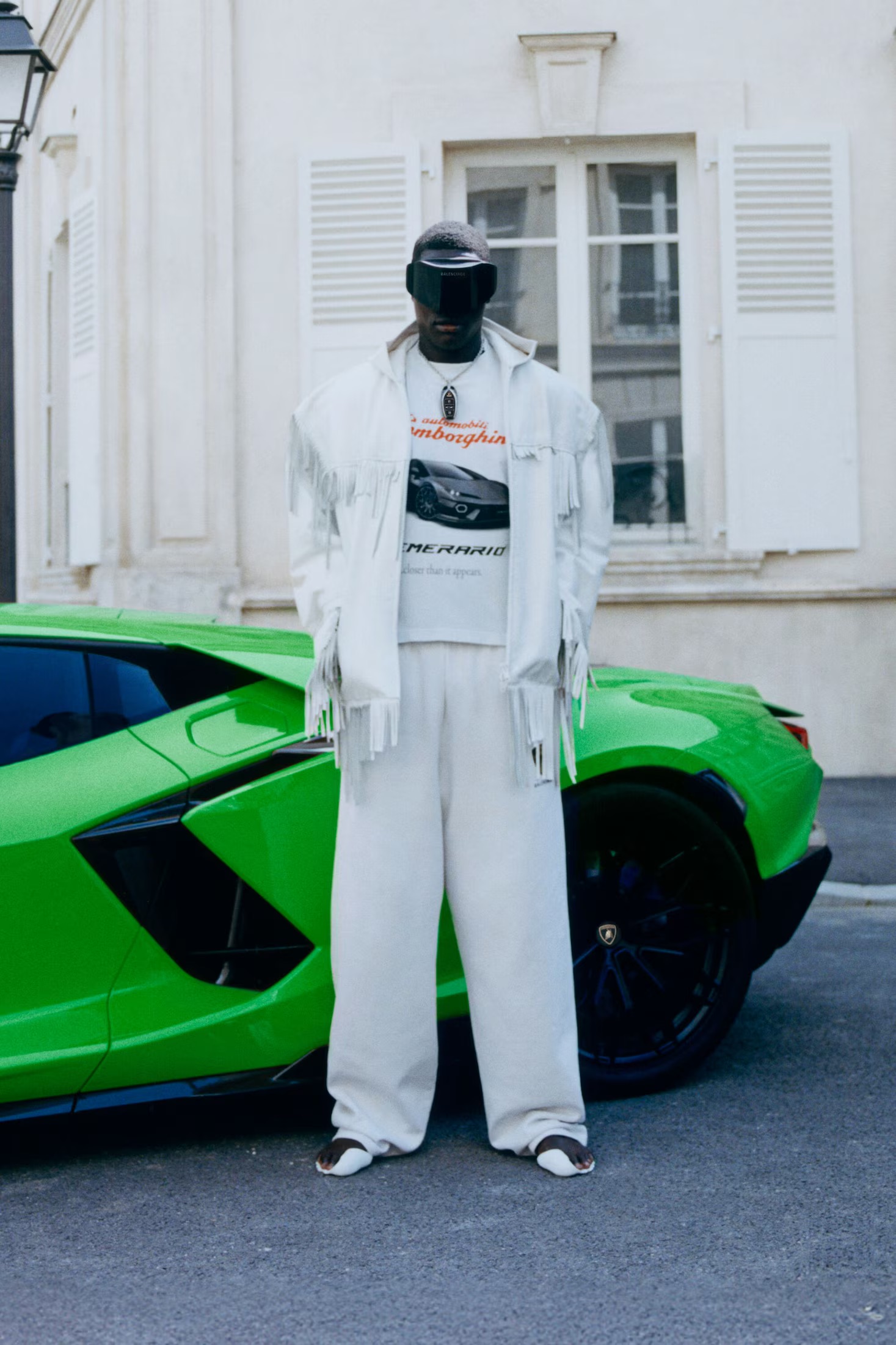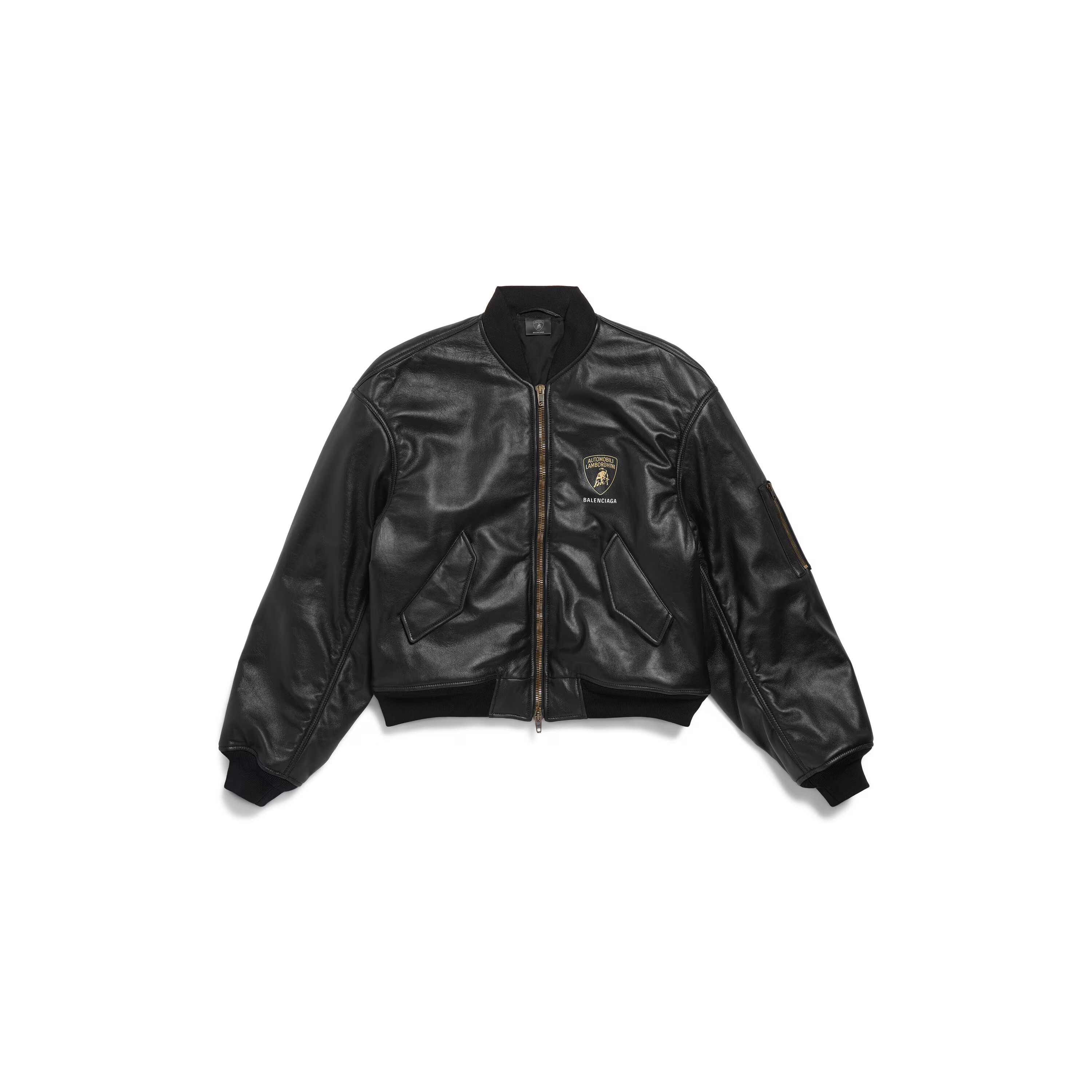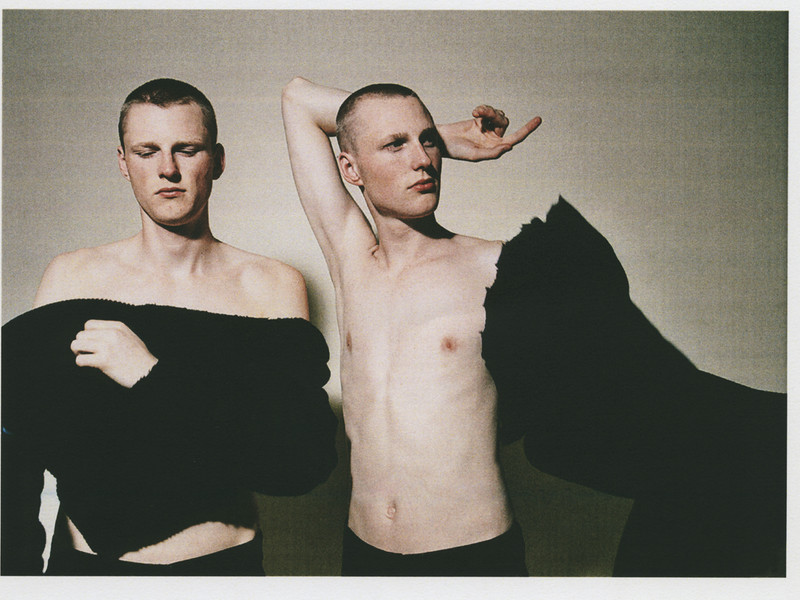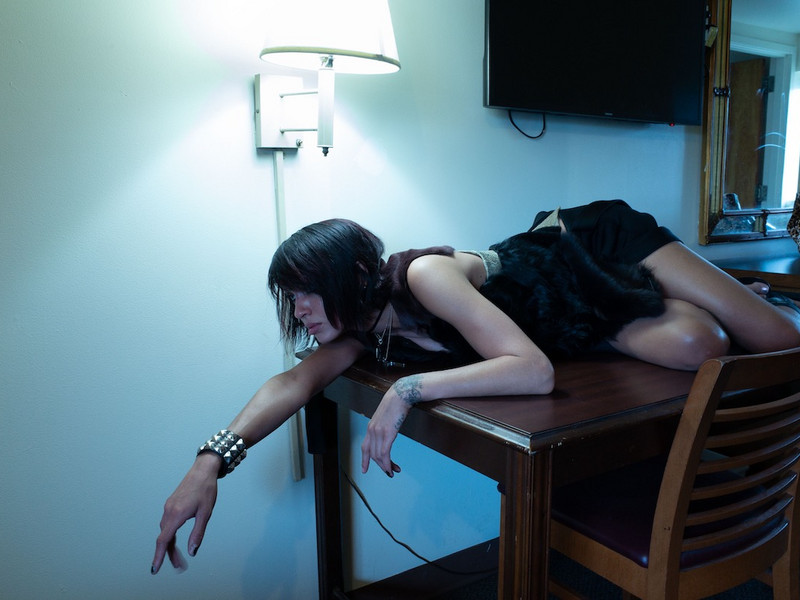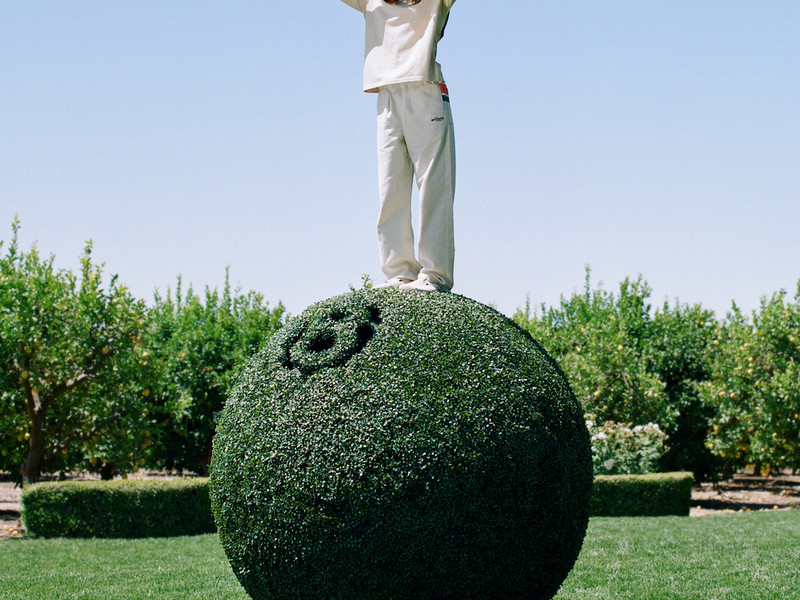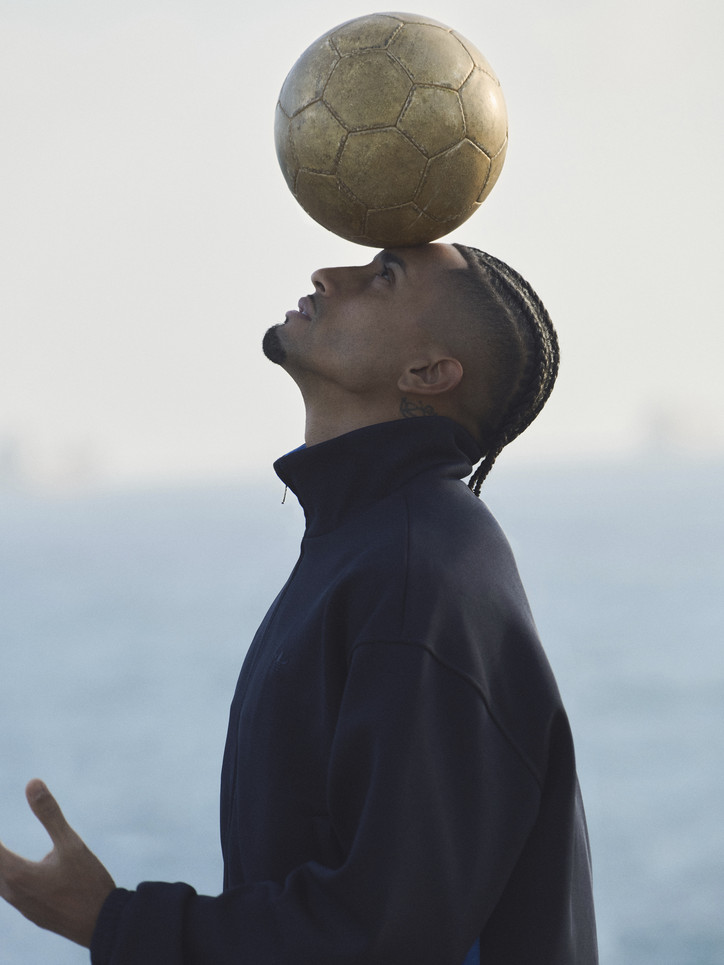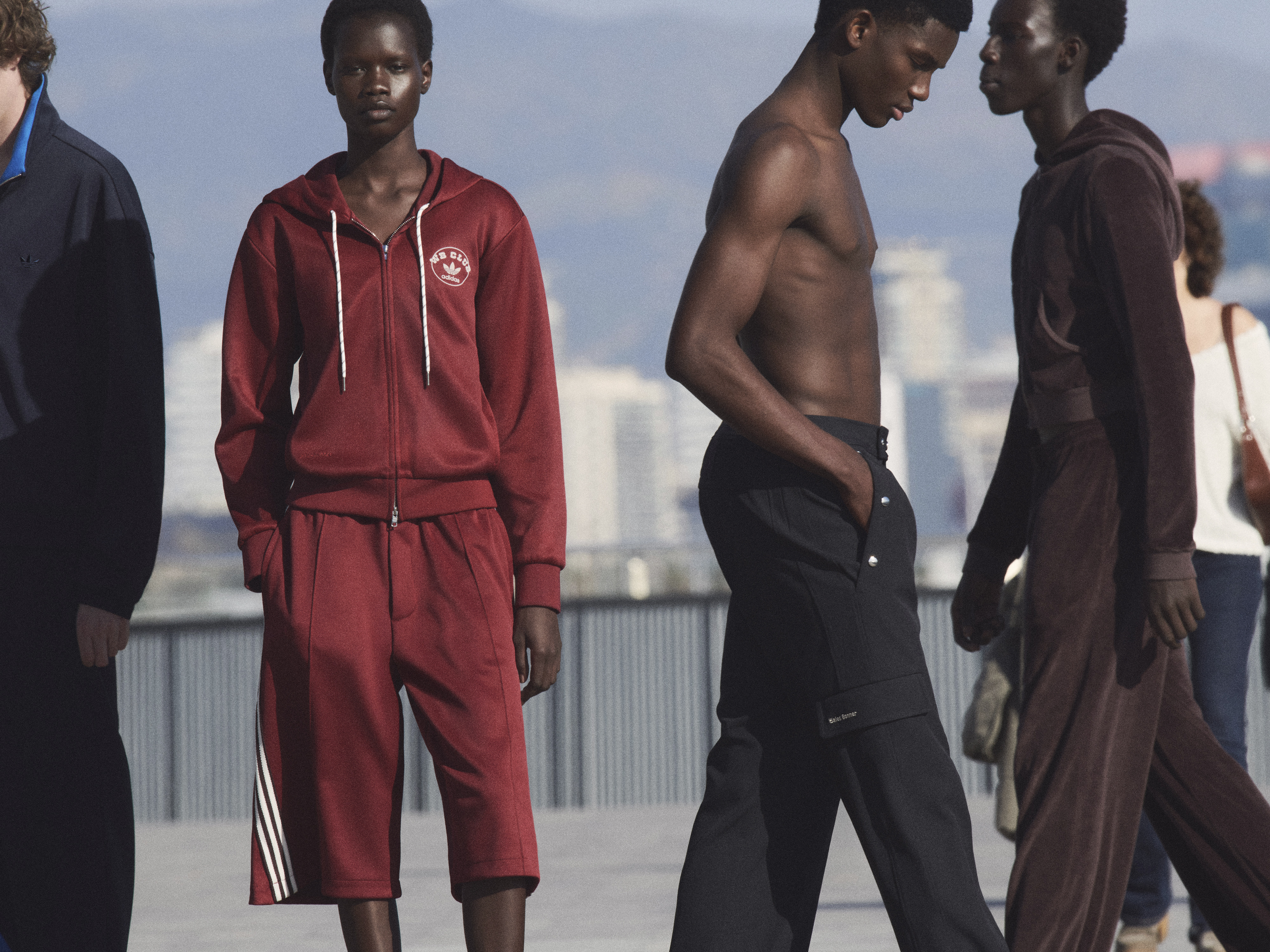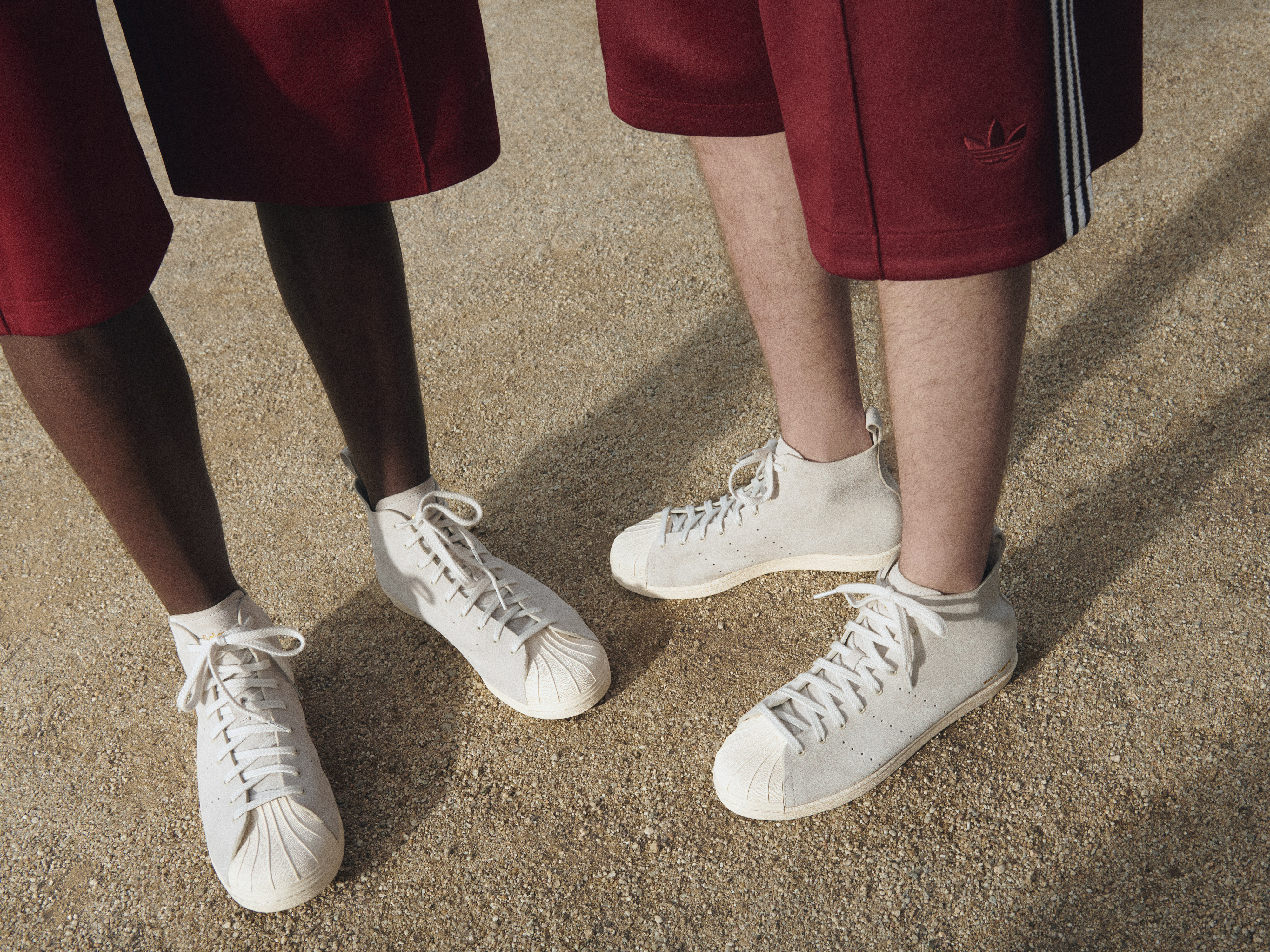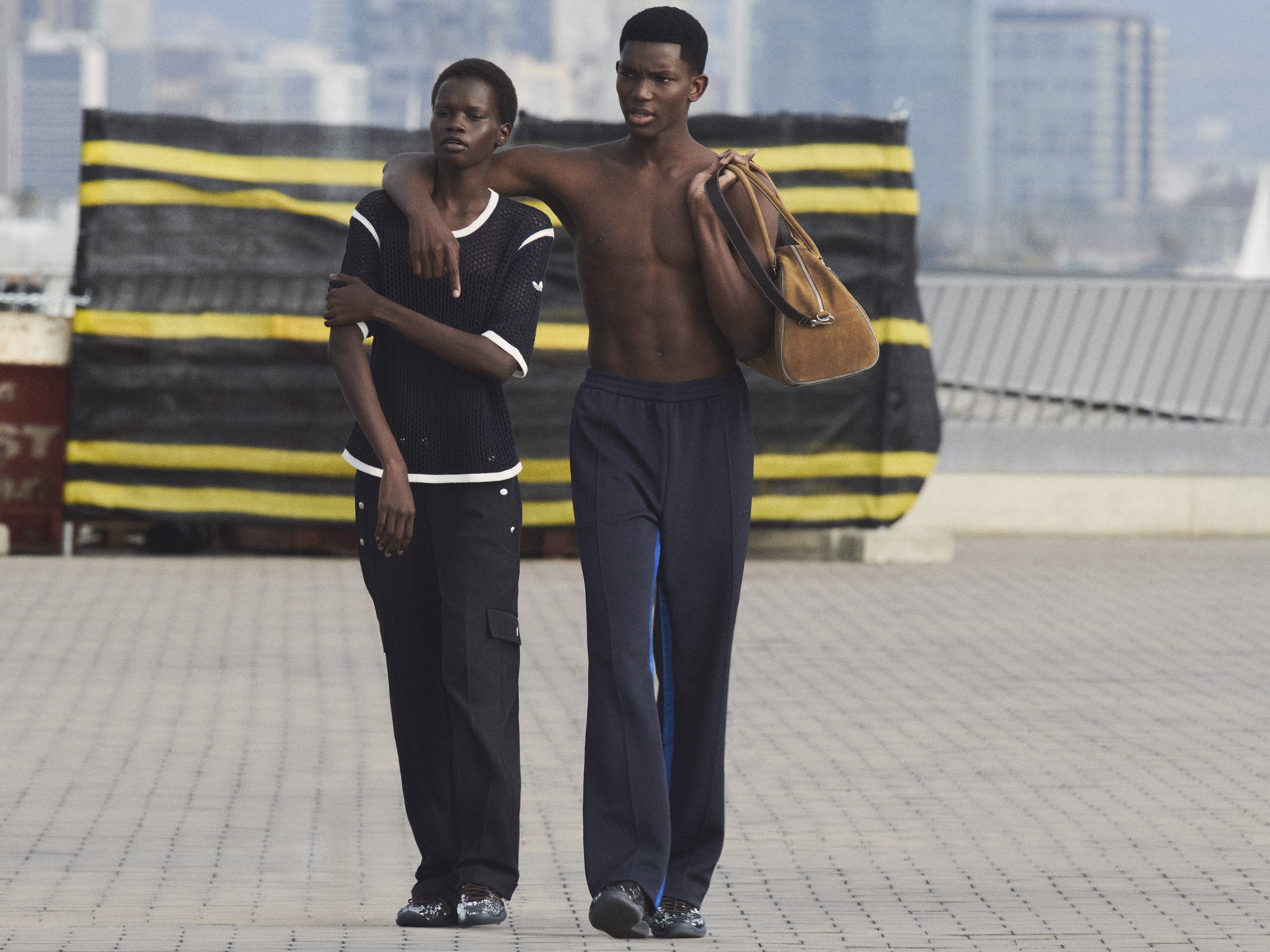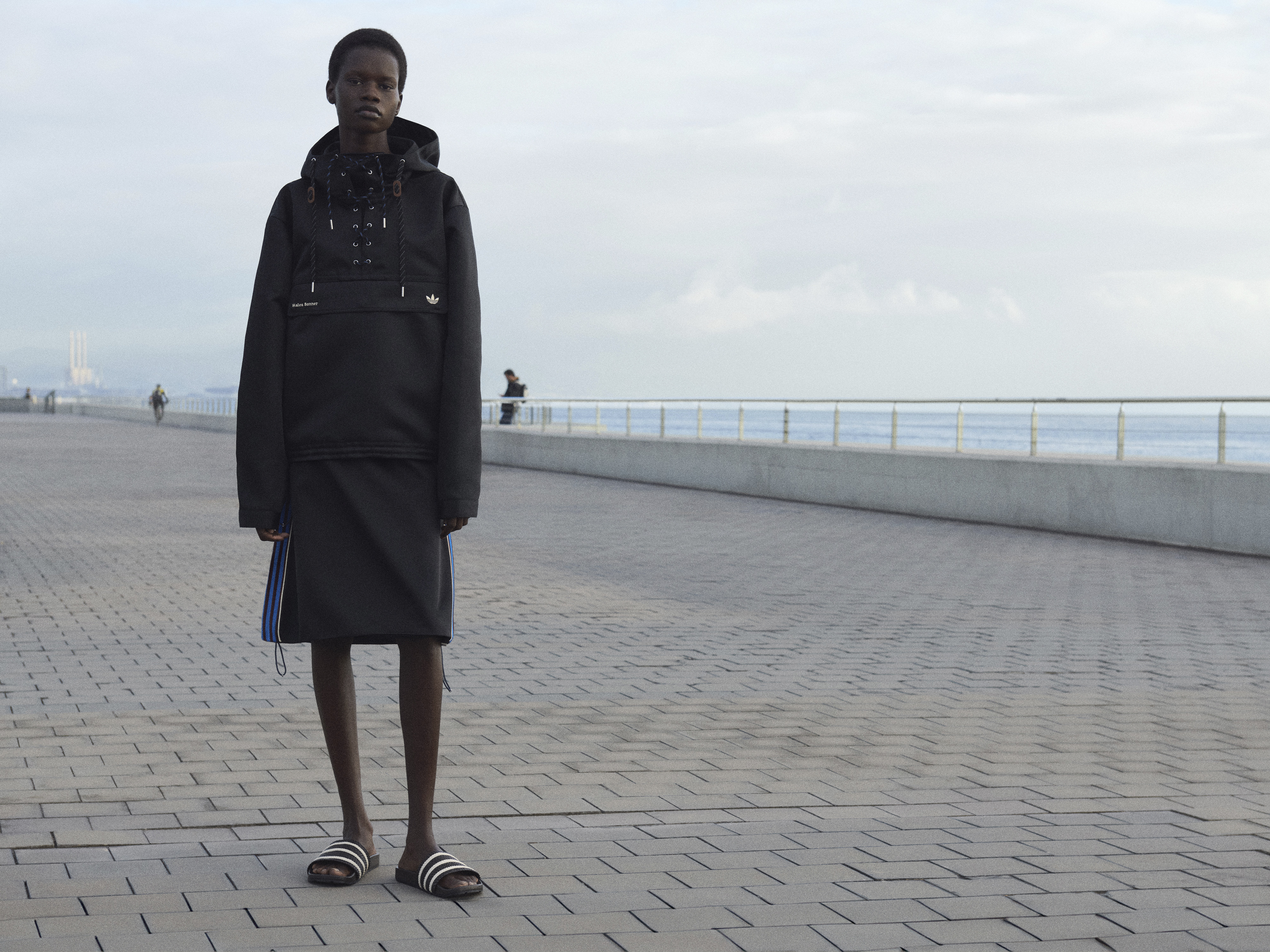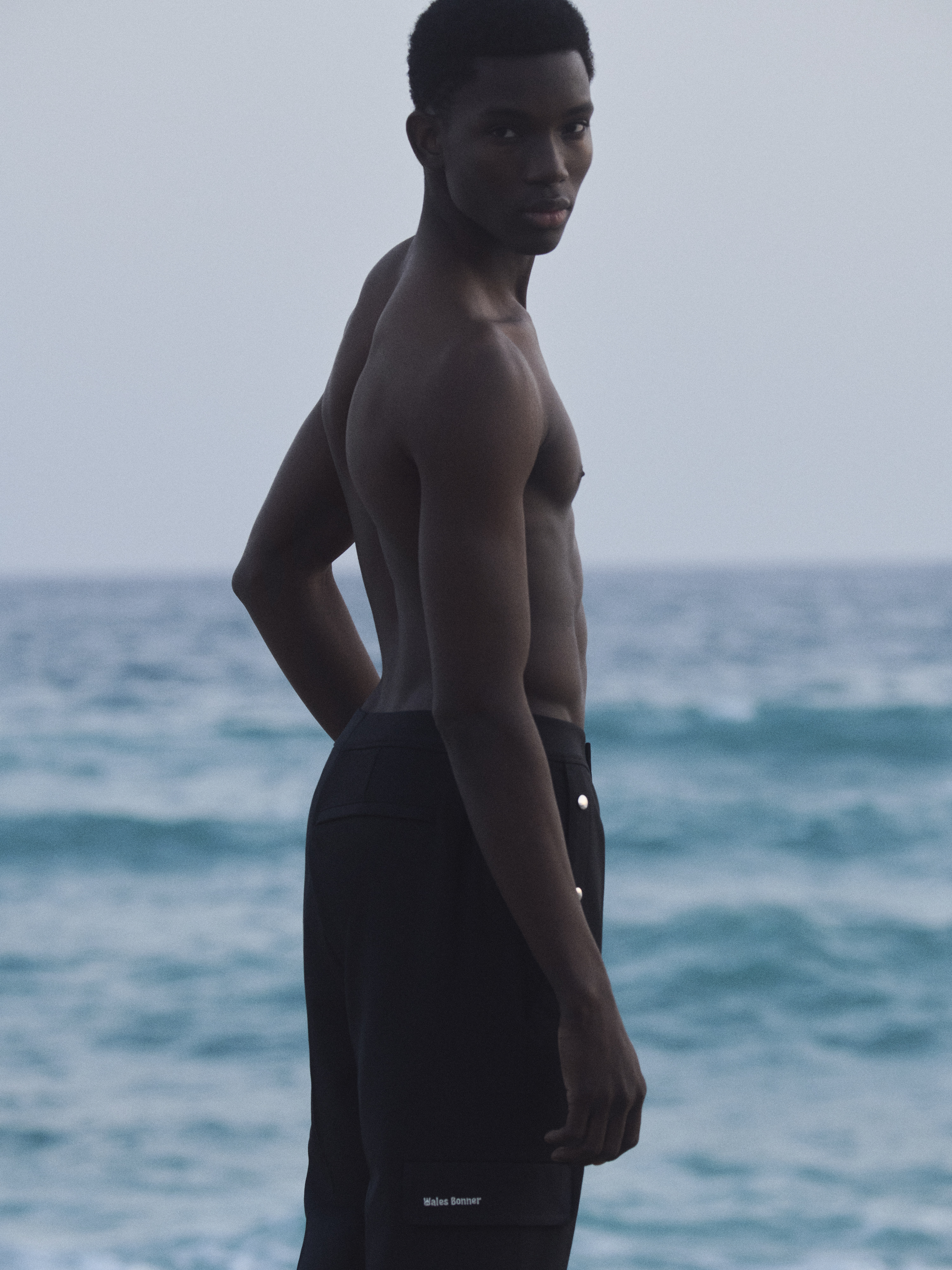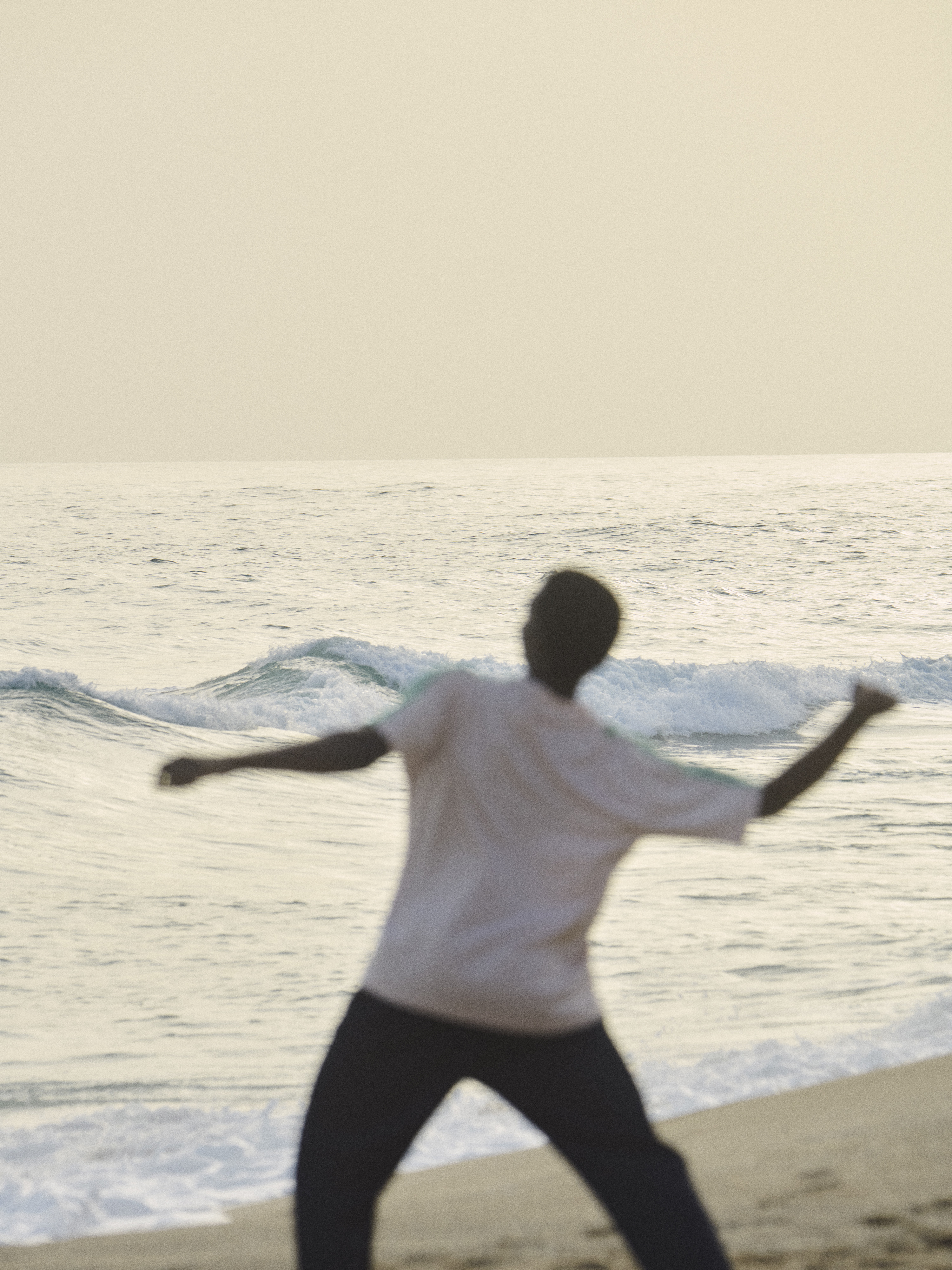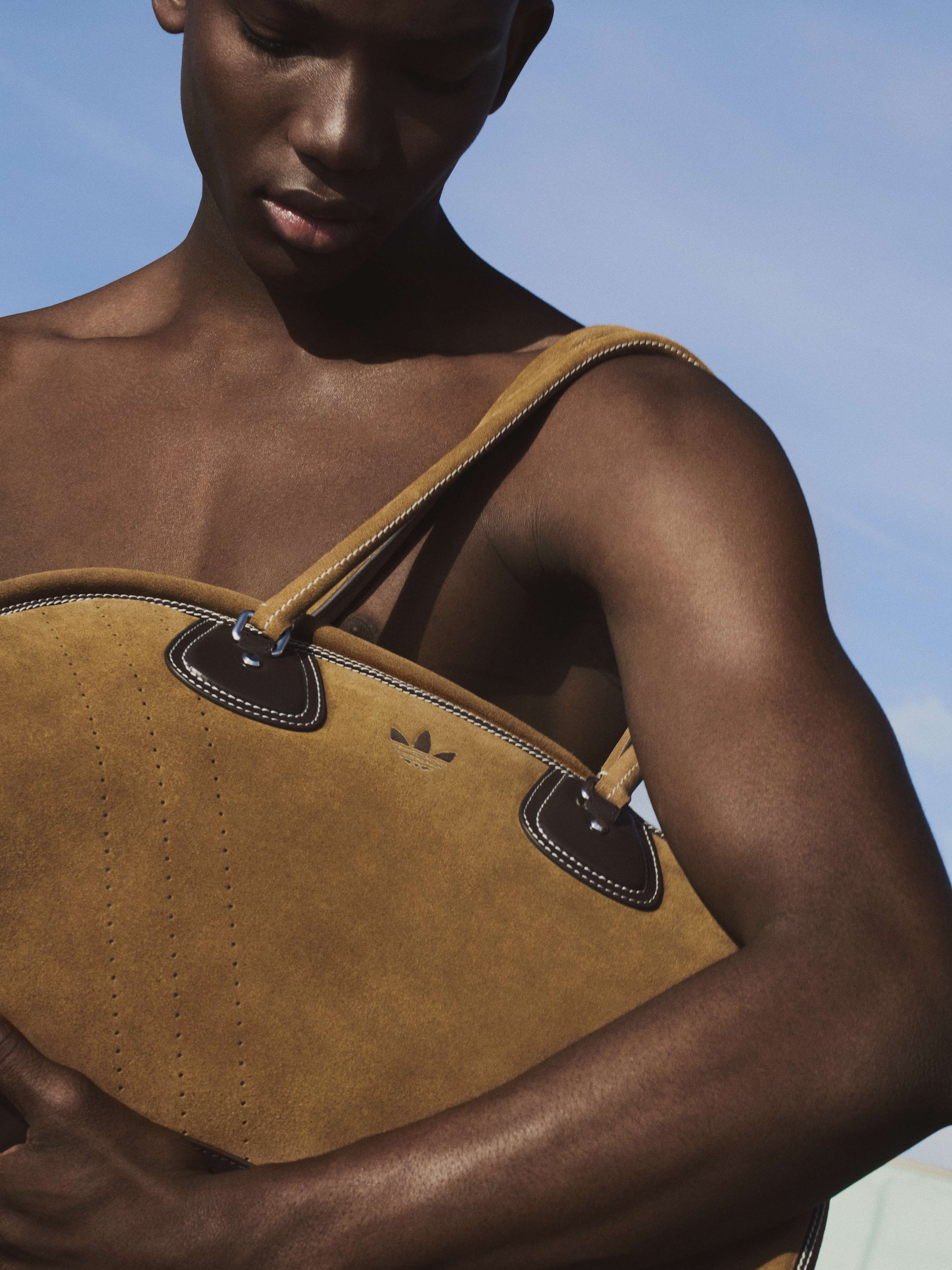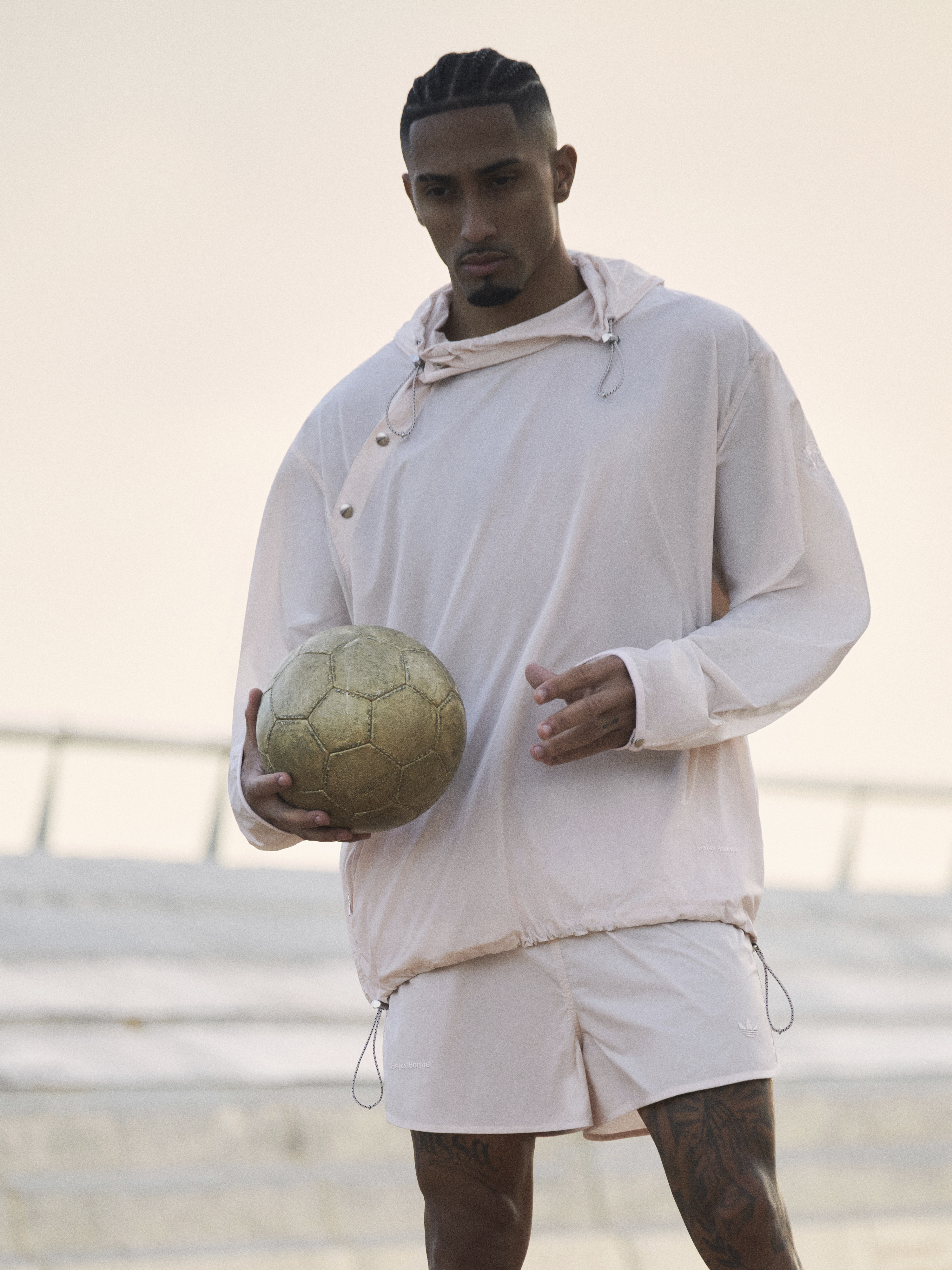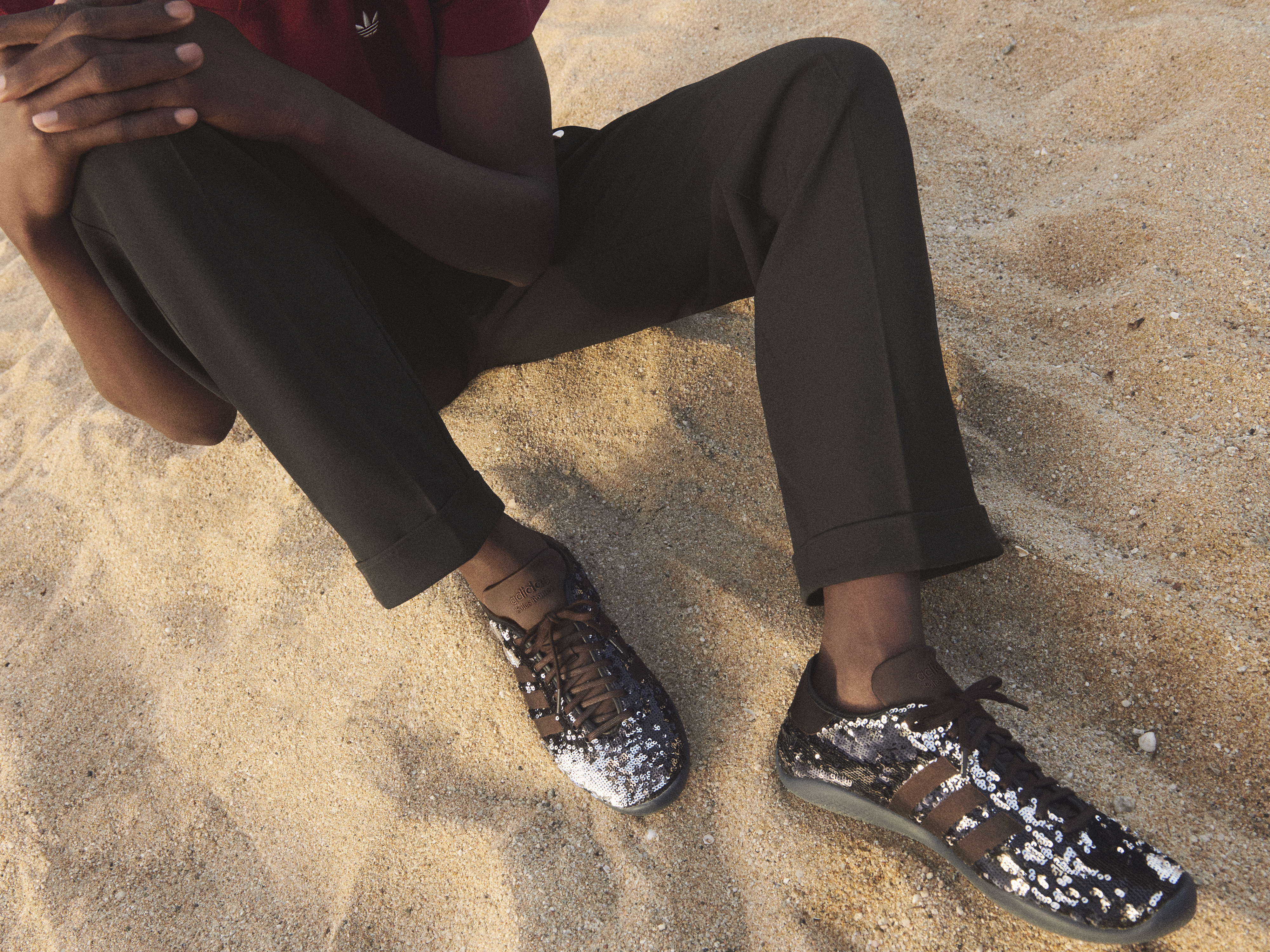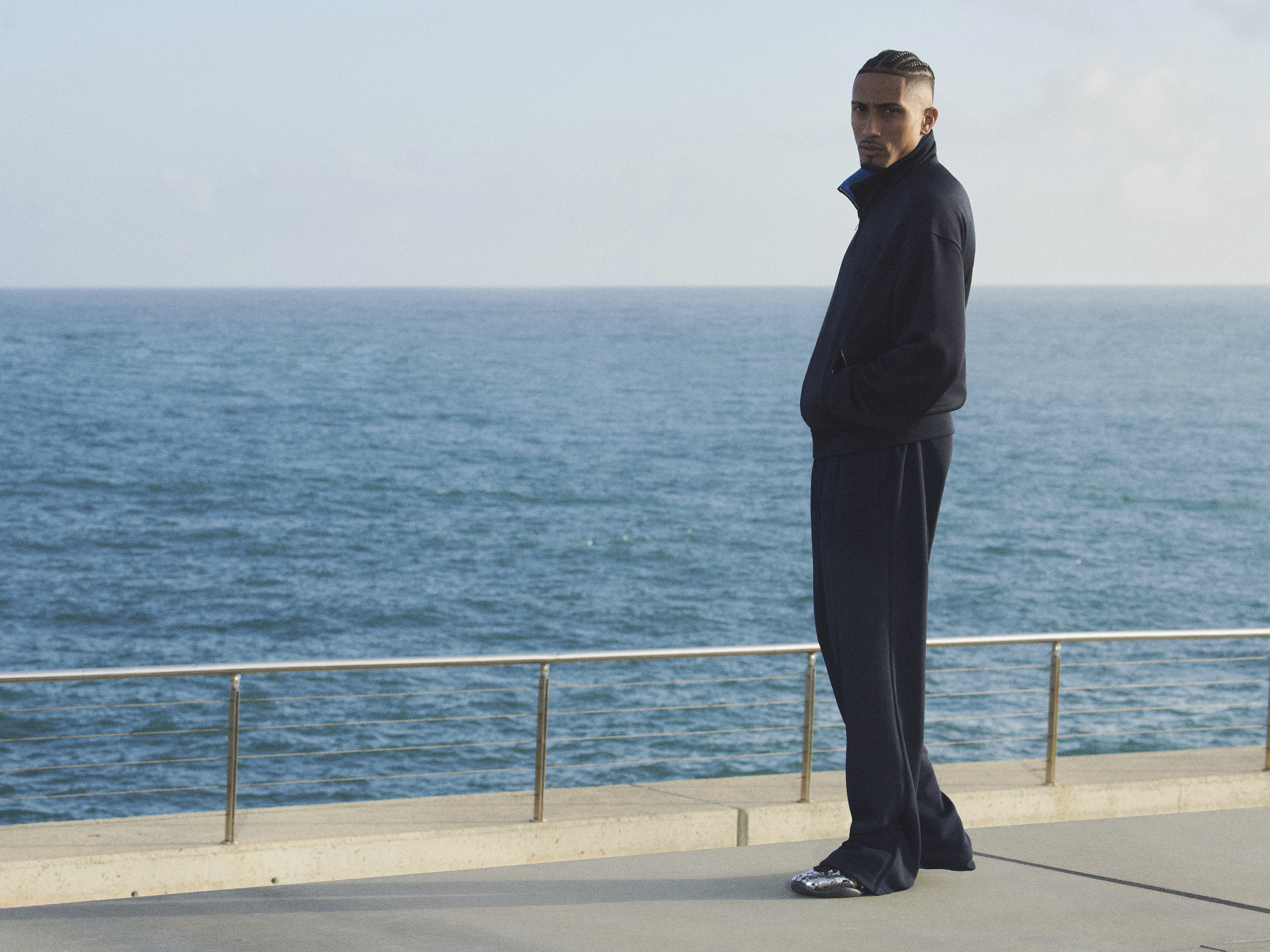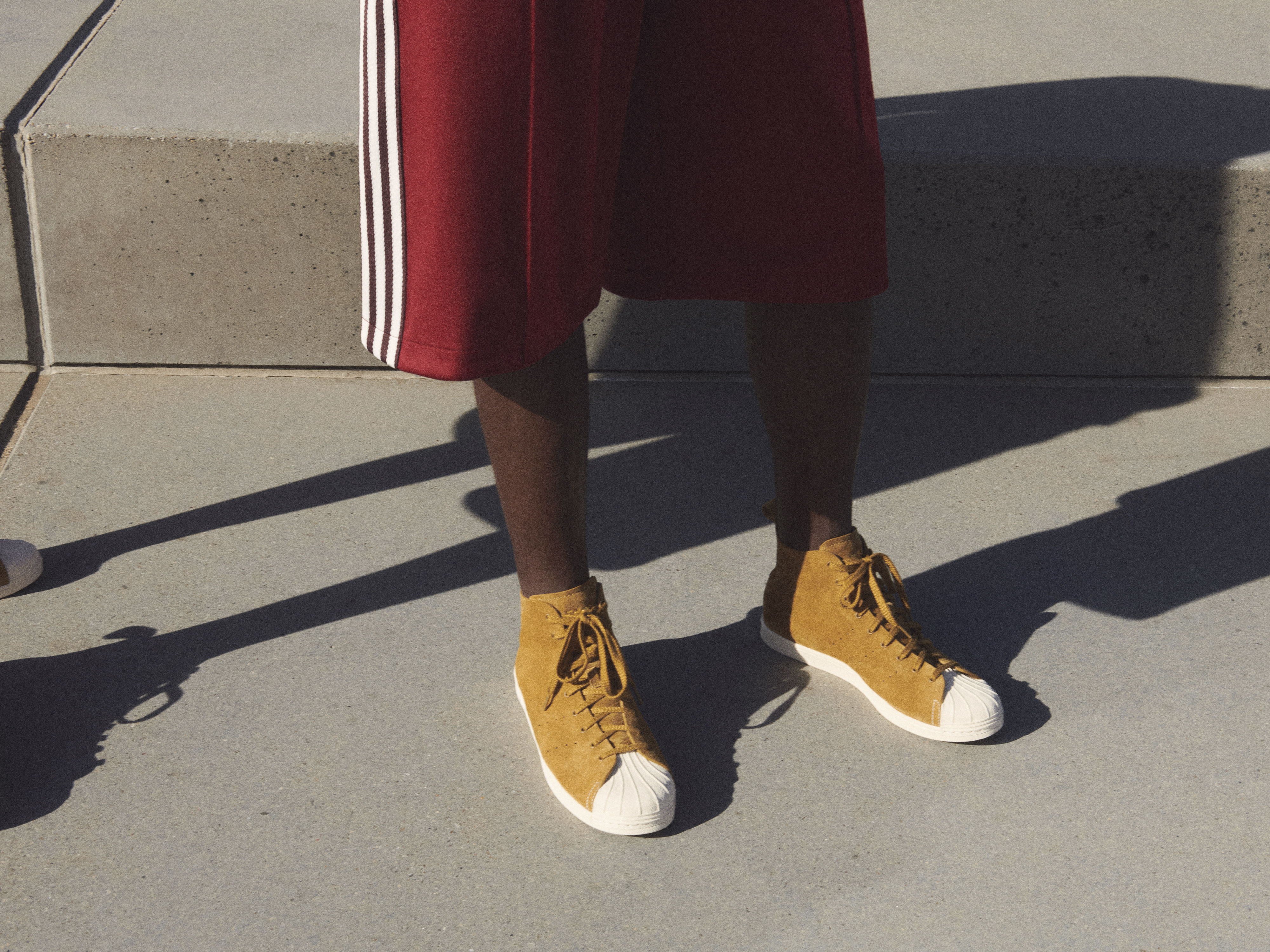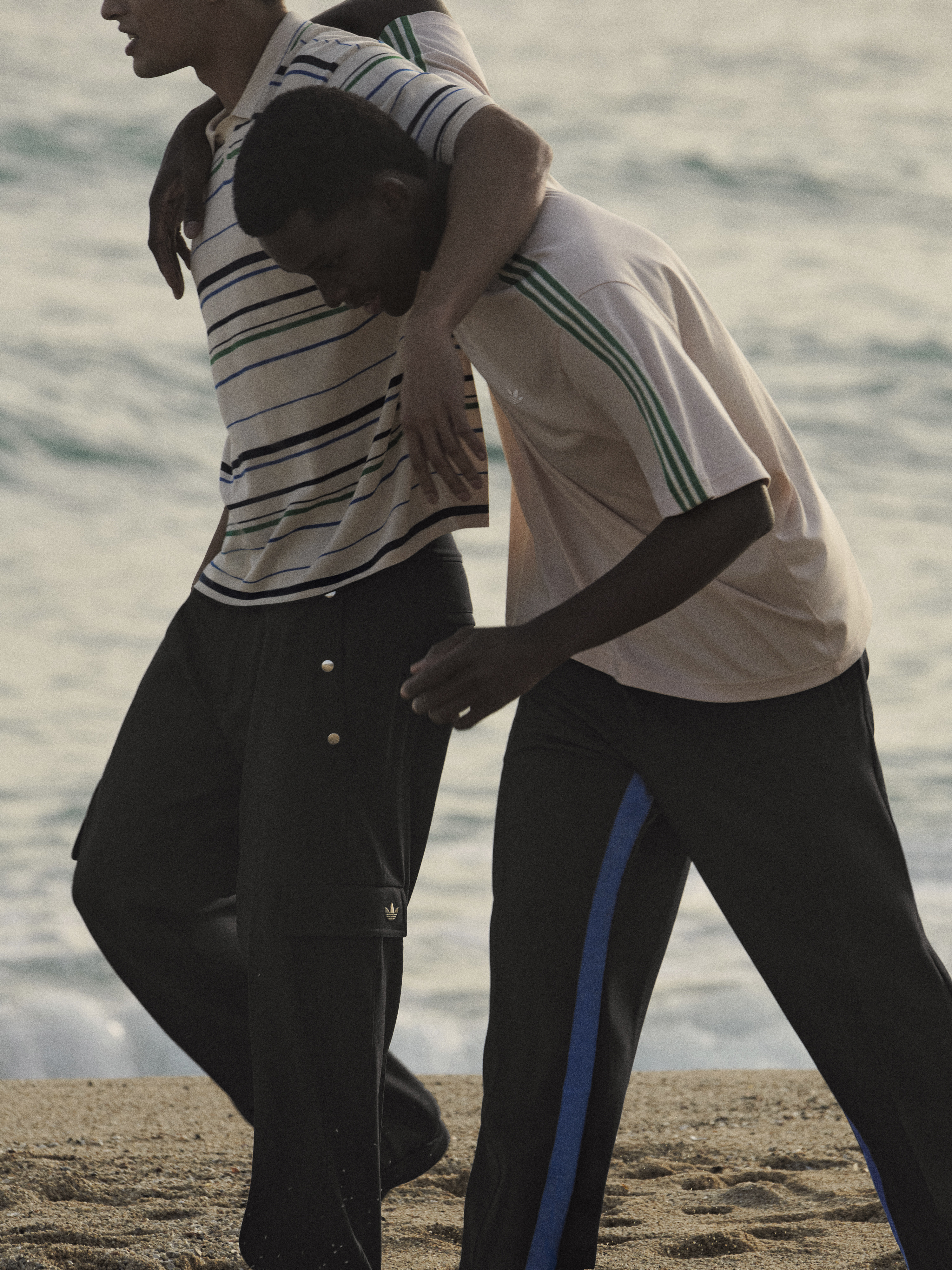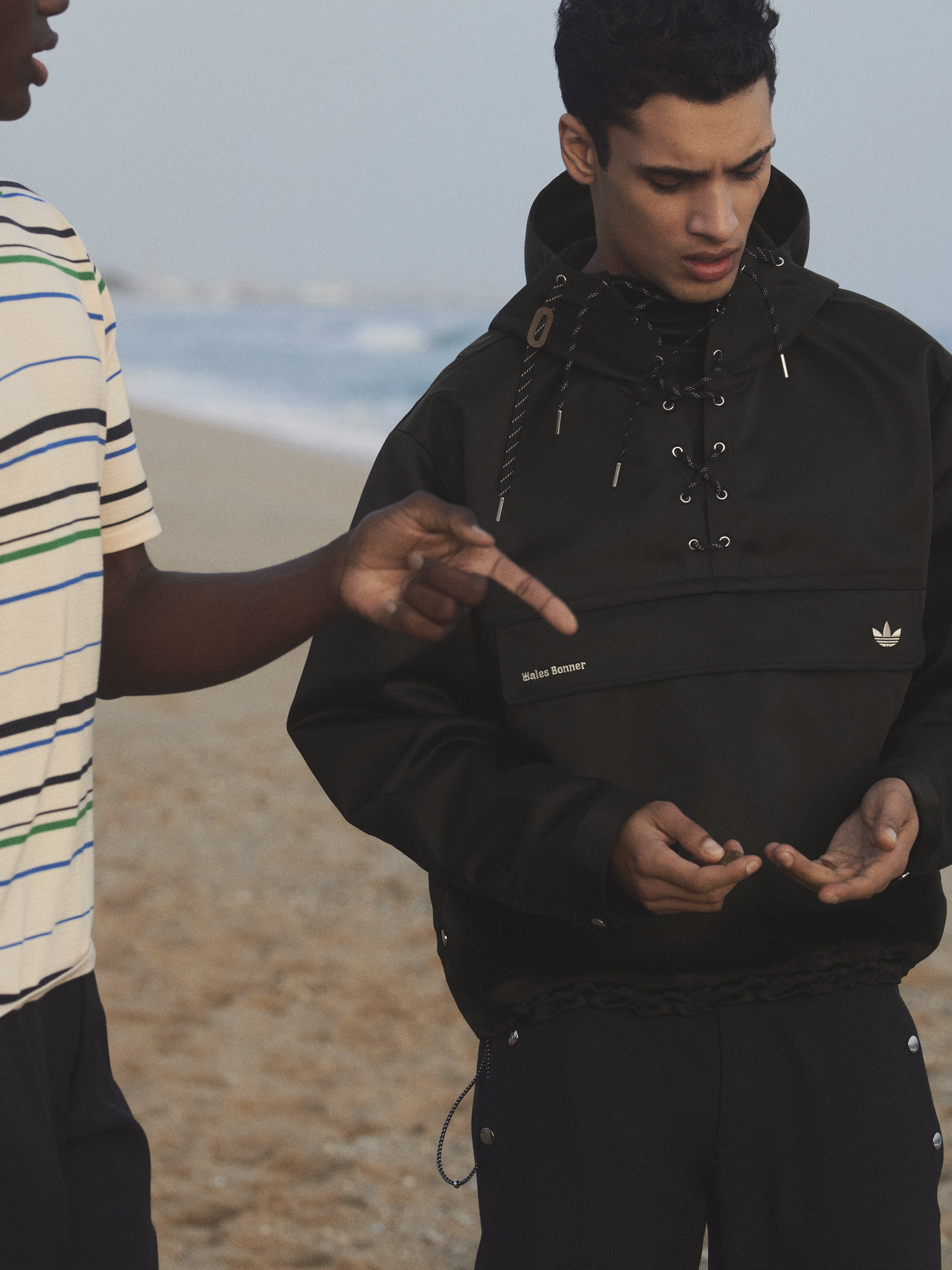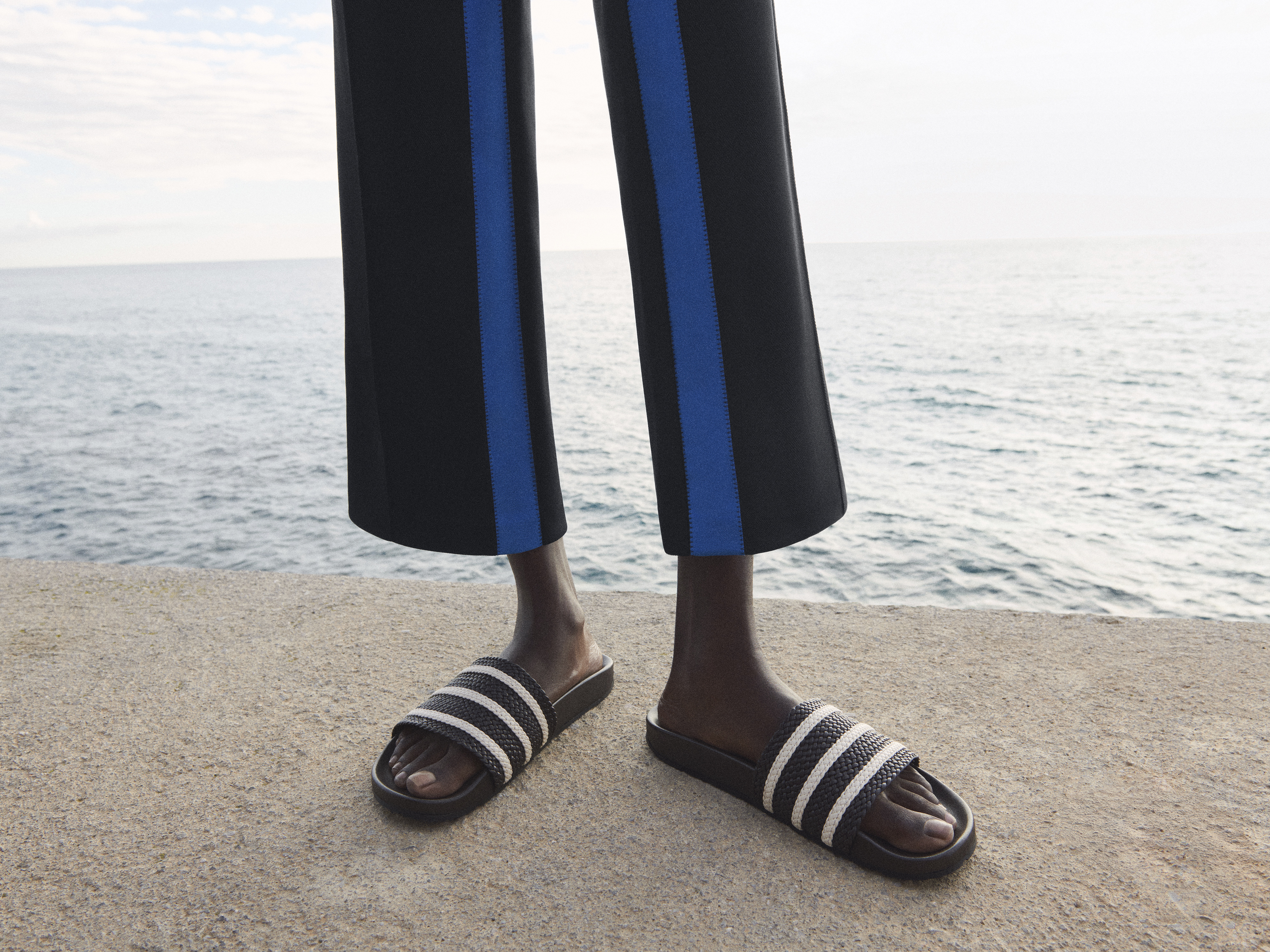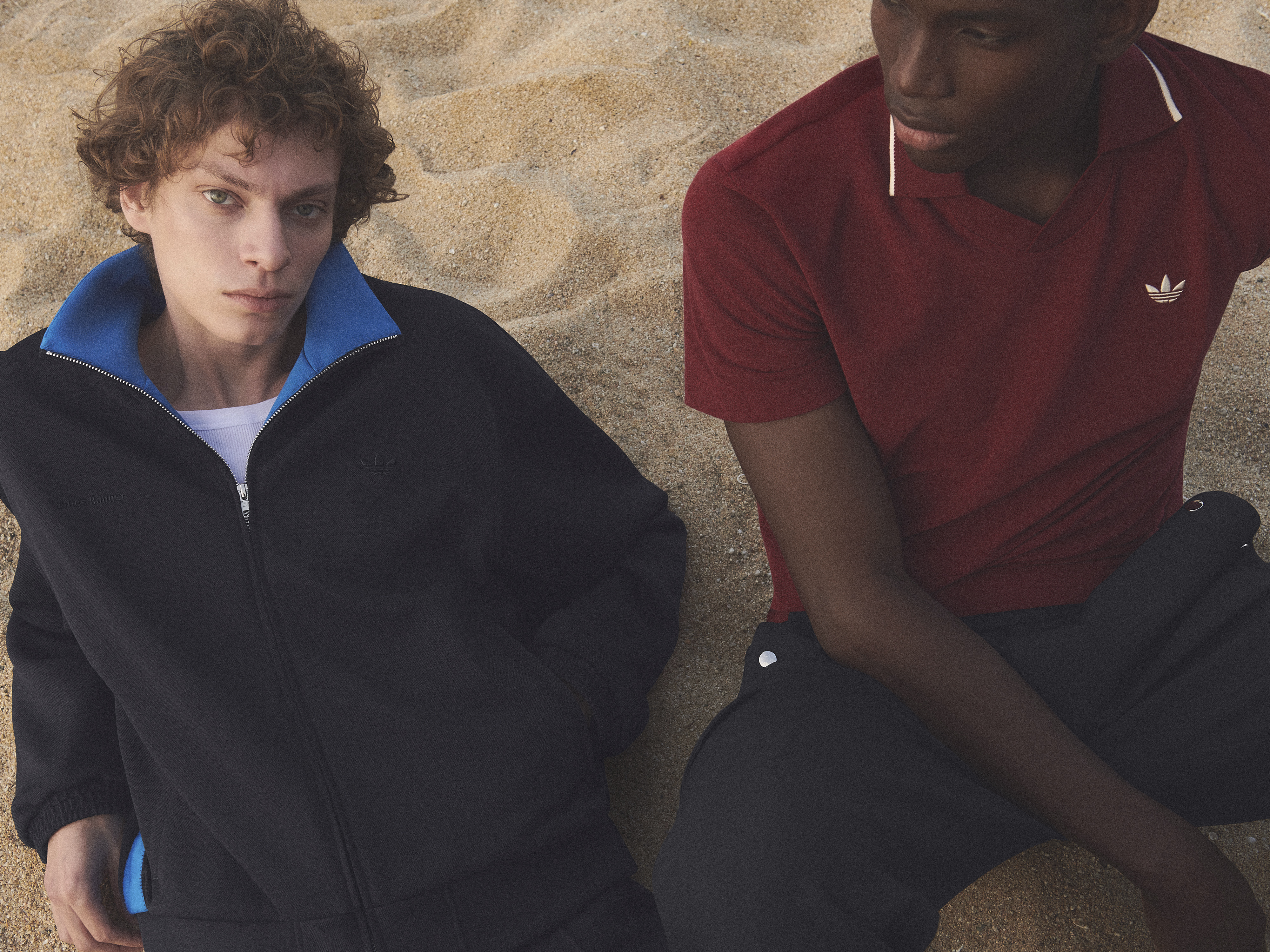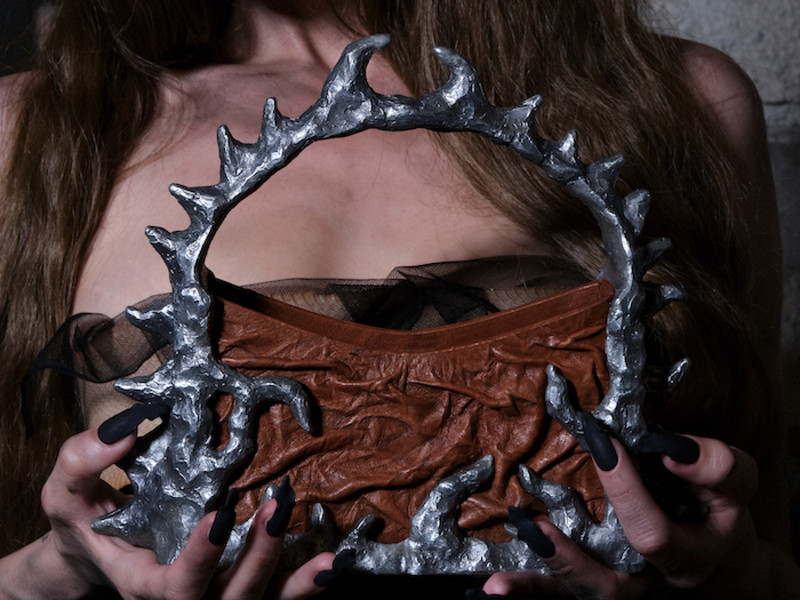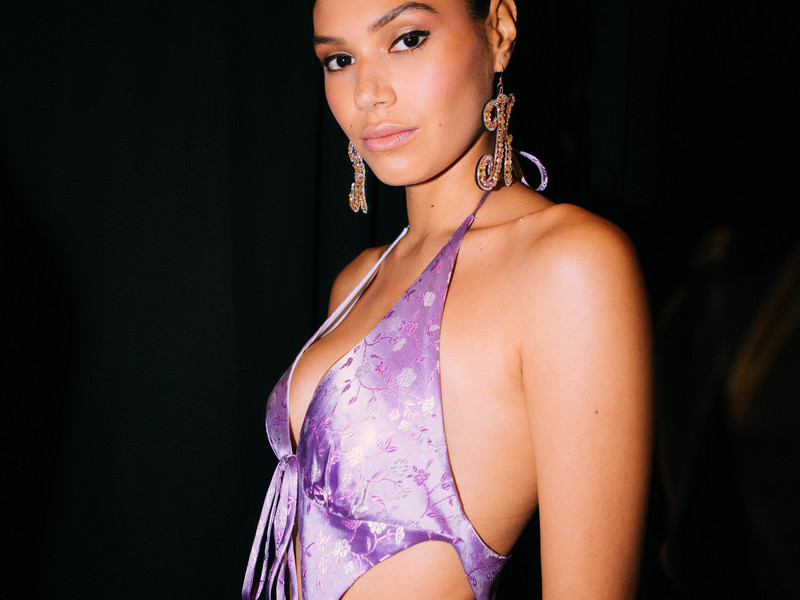American Psychos
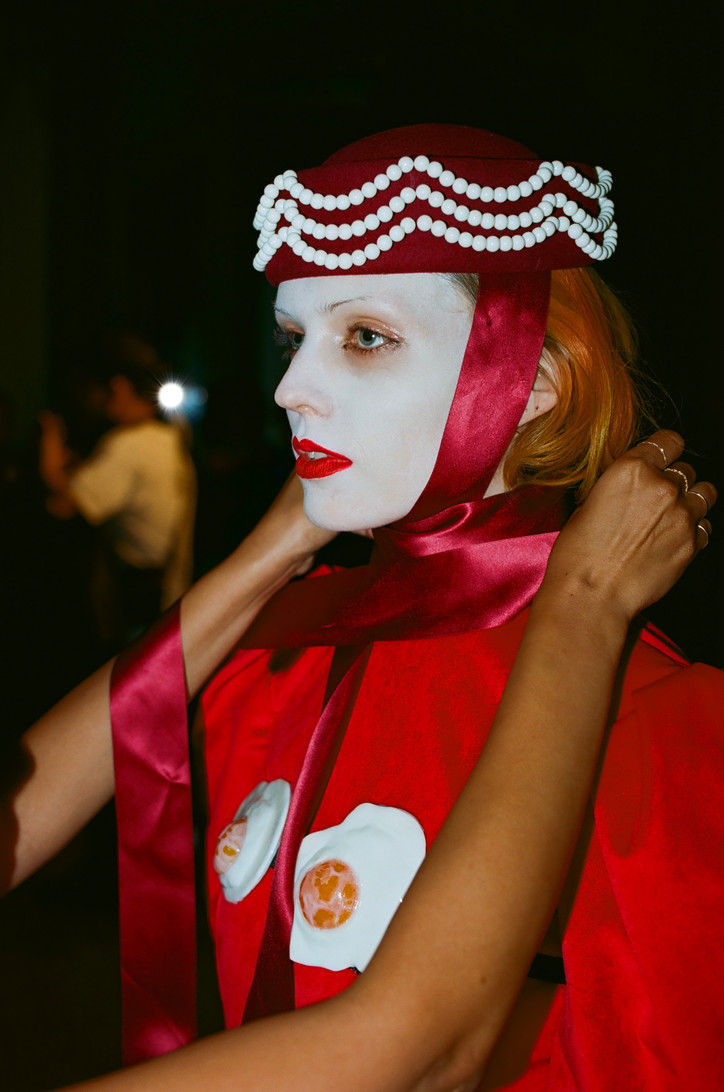
Tell me about the brand.
Carly: The brand started because Isla and I were working together previously in my fine arts studio, Isla was assisting me, we were making garments for larger-than-life and life-size figurative sculptures, and I was also pushing Isla to make clothing for me, selfishly, Isla had many times mentioned the idea of starting a line because we’ve both always been interested in fashion, and I really love engaging with fashion week, it’s such a crazy, fast-paced period of time. I was really resistant, then, a year ago now, six months before fall/winter 2019, we were commissioned to make some garments for a magazine cover, and the talent ended up backing out. We had a bunch of pieces made, and yet again Isla said let’s do a line and I gave in. That was two seasons ago. Since then we’ve gone full force into it, we’re both really focused, hard working people, we know what we like, we know what we want. The first season was harlequin themed, and this season was Romanov meets American Psycho, and now we’re working on the theme for next season, but we’re just trekking along.
That is such an interesting story. I love that you started with dressing fine art sculptures. Do you plan on keeping your finger in fine art?
Carly: Maybe later. This is more work than anything I’ve ever ventured into before, which both of us really love, because we’re very work-oriented people. I don’t really miss the fine art world, I think part of the reason I gave into doing fashion with Isla was because I was turning 30 and looking at my situation and I realized I wasn’t liking the art world, and I haven’t really liked it for a while, and it felt like I was swimming against a current, and with my Saturn return I wanted to try something else. You should like what you’re doing on a daily basis, so I took that leap and so far it’s been great.
Ayla: I think we have a lot of fine art elements without being in the fine art world, especially with the accessories—the shoes are very sculptural. So we haven’t completely severed our ties with fine art.
Carly: Yeah, the shoes. Last season we made shoes with resin platforms. And then the leave-ins at the show I worked on a bunch of paintings and drawings related to the season. So I’m still doing everything I was doing before, we’re just applying it to a fashion line. It feels all-encompassing, where before we really got into it, and I was at this fork in the road, I wasn’t sure if I wanted to push forward into fashion with Isla or make Isla head into film with me—because I want to direct films at some point in my life. Fashion is, to me, a stepping stone towards that because it’s all-encompassing and it’s very theatrical, you cast a show, the bodies move, we’re creating characters—I think our line feels a bit different to people because we are creating characters, we’re not just making clothes.
It almost reminds me of early Galliano and how he would do a theme and a story with his shows.
Carly: We definitely referenced his early stuff in both collections.
Ayla: We had that discussion when we first started, like what are we personally drawn to, and the biggest thing for us was looking at Gautier, or Comme, or Galliano—just really good storytellers on top of making really cool garments but they have such a specific point of view or narrative, and I think that’s supposed to be the exciting, theatrical part of fashion. I think a lot of fashion has lost that.
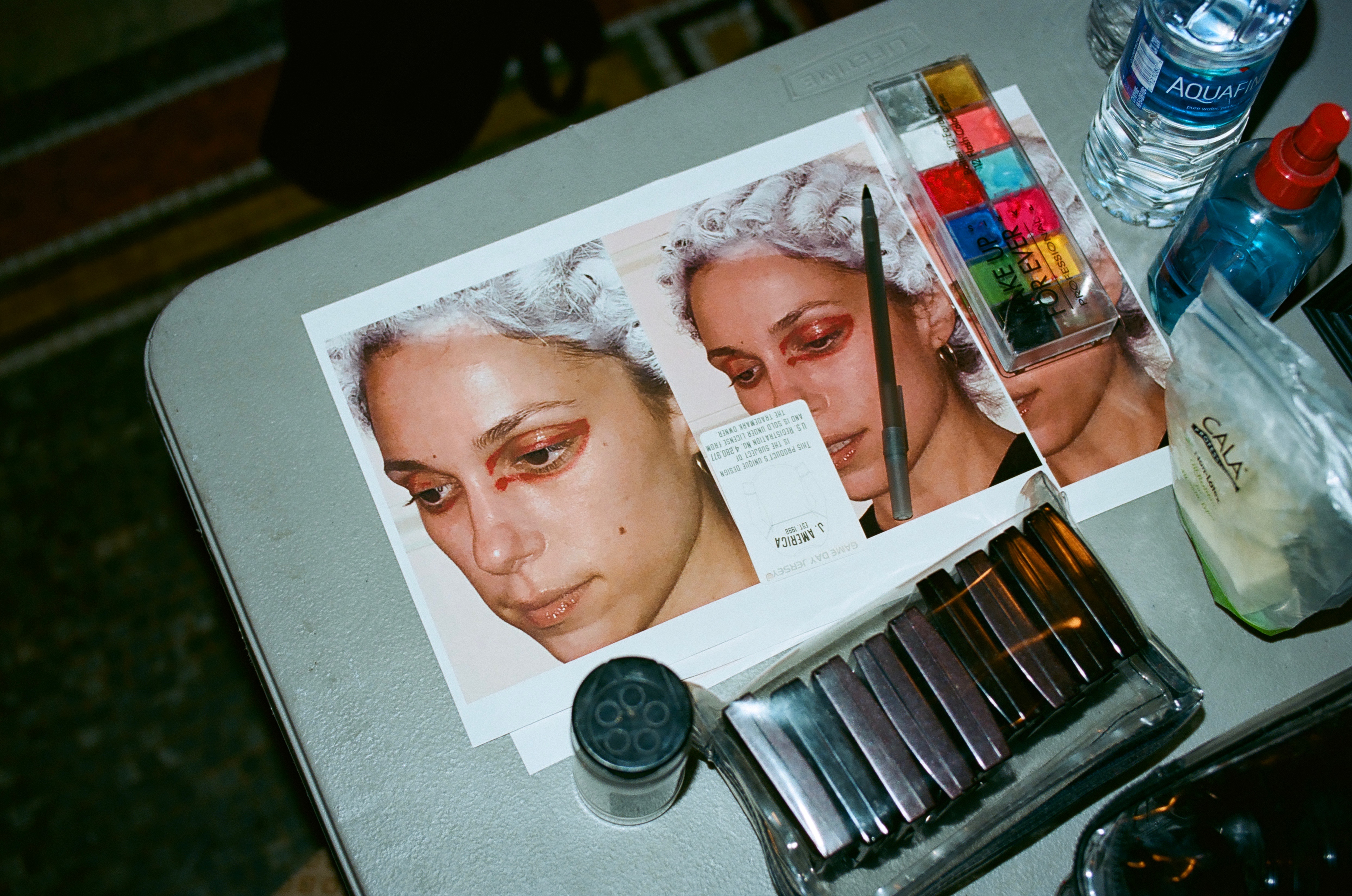
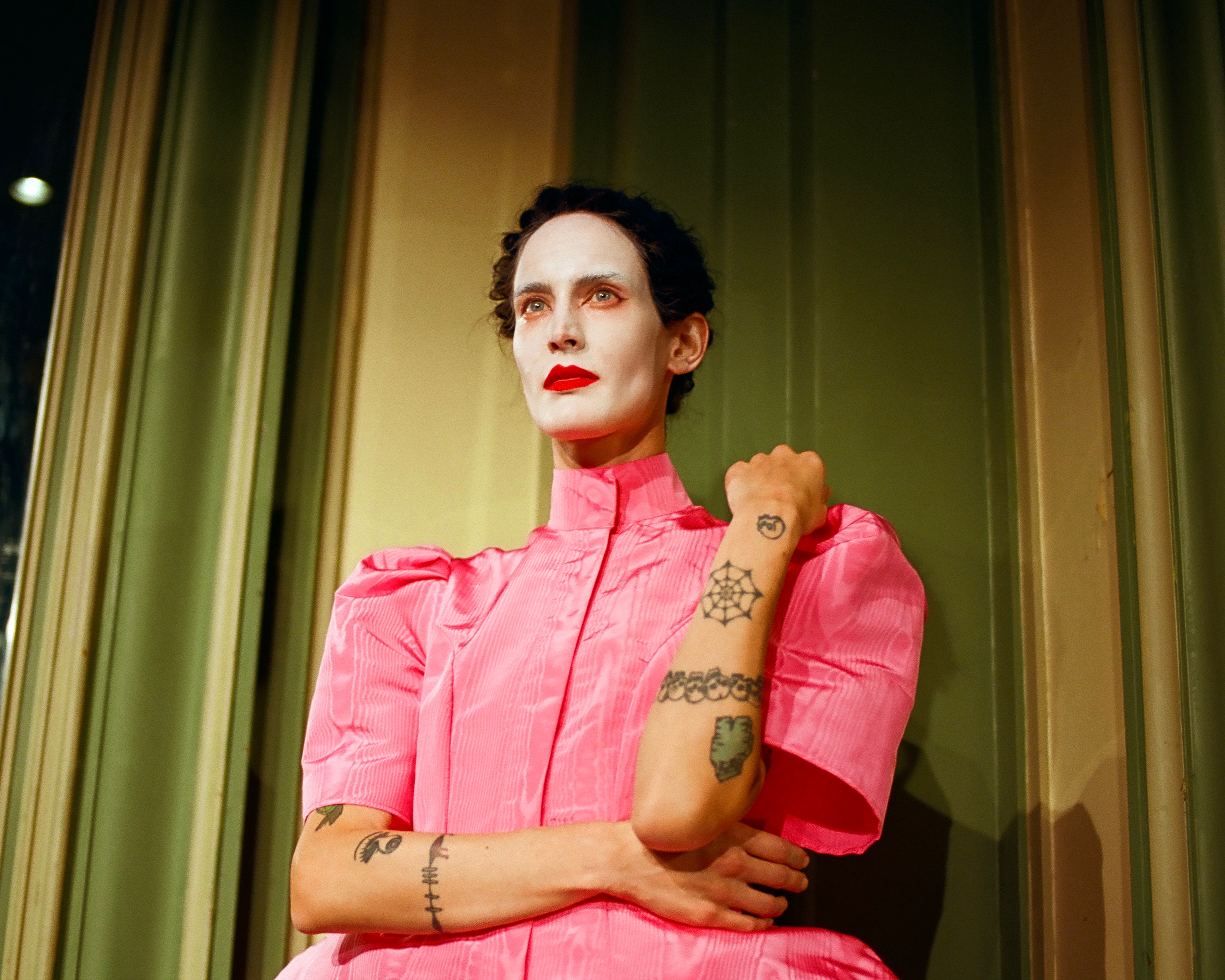
I always tell people that, at least in high fashion, that it is a show, and even if it’s a dull, purely aesthetic story about lines or something, still there always a little bit of a narrative in some way—but with you guys it is almost like analyzing an artwork with a lot of disparate elements and symbols.
Carly: We’ve come from the fine art angle—I’m used to installing a show, I’m used to conceiving a show, I do think about it conceptually before we even start making the garments, we’re working on the boards right now for season three, and what that entails is pulling images, watching movies, finding references, but more than that having a conversation about why: why this theme, why these references, what it means to intersect these ideas. I went to art school and spent four years in critiques, so it’s the only way I know how to start a project.
From the point of view of critique—I do the same thing, I critique it as I’m making it.
Carly: Last season, I knew I wanted us to work on a Romanov theme, I knew I wanted to focus on Fabergé, but we sat down and talked about what it would mean to make a Romanov-inspired collection as an American at this period in time given the political terrain. First we had to weigh, like, is that even a conversation we’re allowed to have—is that cultural appropriation? Or are we allowed to have it because it is such a hotbed topic right now? Because it is, we were more drawn to it, I think, and we looked at the ways it relates to America and our political situation, collusion, etc. and so we brought in the American Psycho angle in order to have that conversation. So the eggs, they were Fabergé-inspired, but once we started talking about collusion and ‘walking on eggshells’, it also made sense.
Ayla: There are a lot of eggs in cinema, too, like 80s power lunches where lawyers go and have their brunch while doing business, so it’s like this weird cross.
Carly: I’m also a huge fan of Marcel Broodthaers’ egg sculptures—he had a gorgeous retrospective at the MoMa a few years ago, he was such a poetic conceptual artist, so those were on the board as well. We gelled together all these things and also made sure they were in line with what’s going on in the world today or more specifically this country and why we’re talking about it. So that’s where we start. That’s the conversation we’re having now.
What’s going on in the world.
Carly: What’s going on in the world, what themes are we drawn to and why, so that we’re not just making objects, we’re not just making garments, we’re having a bigger conversation. I think that’s what’s really exciting about fashion. It’s really fast, but it reaches a large audience—bigger than fine art, in my opinion—it’s on a body, it moves on a body, and when you place it on a specific body, it changes the context of it and pushes the conversation even further. It’s a very spicy medium, and I really like that.
Ayla: I think part of it too is to realize how tangible fashion is for people to understand. Some people get so frustrated because they go into an art museum and they can’t connect with something on that deeper intellectual level, but fashion you don’t necessarily have to. We all dress ourselves, you just see something that you’d like to wear without getting the bigger reference, I think that’s okay too, it makes people more comfortable and safe to engage with it.
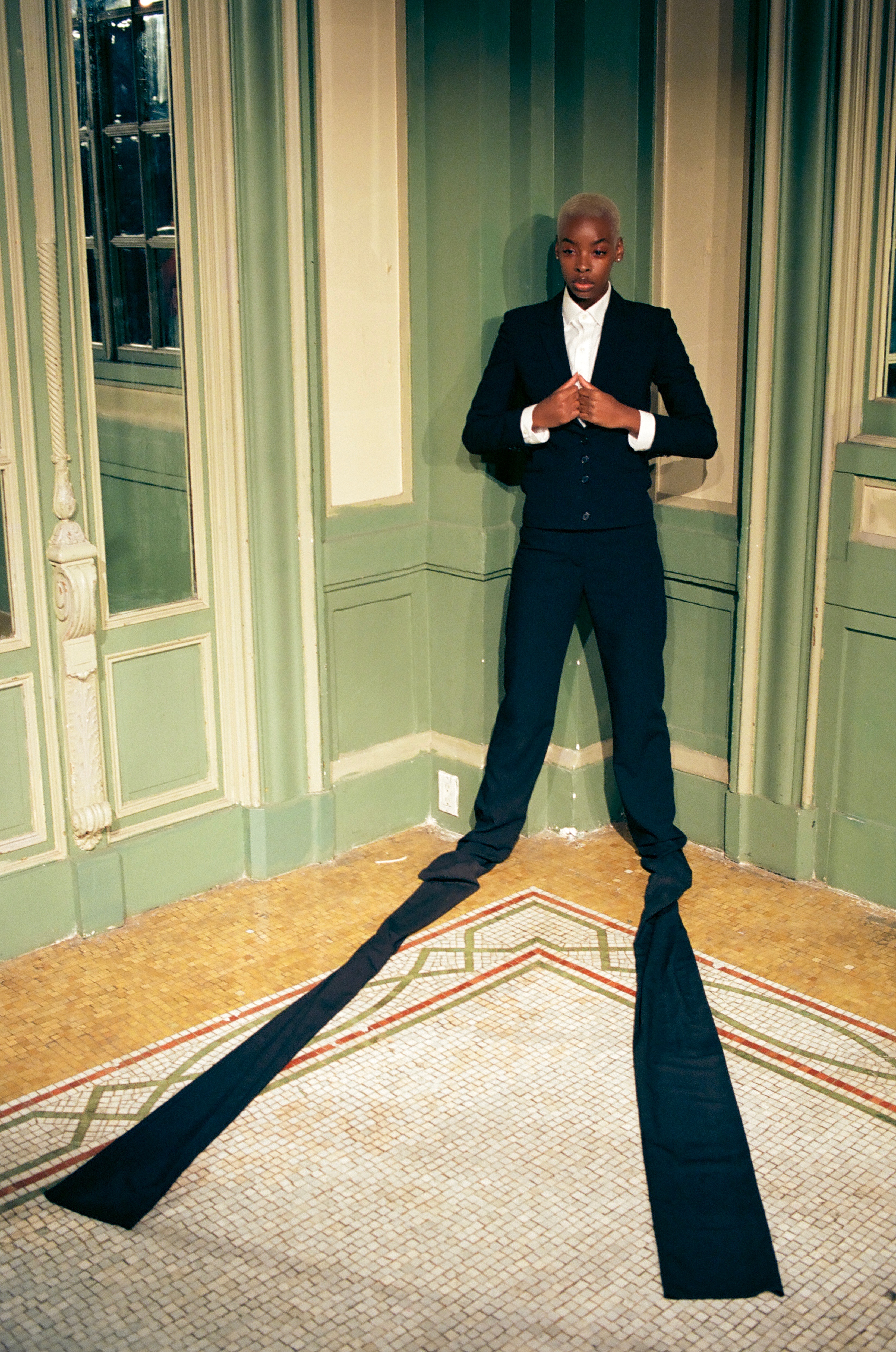
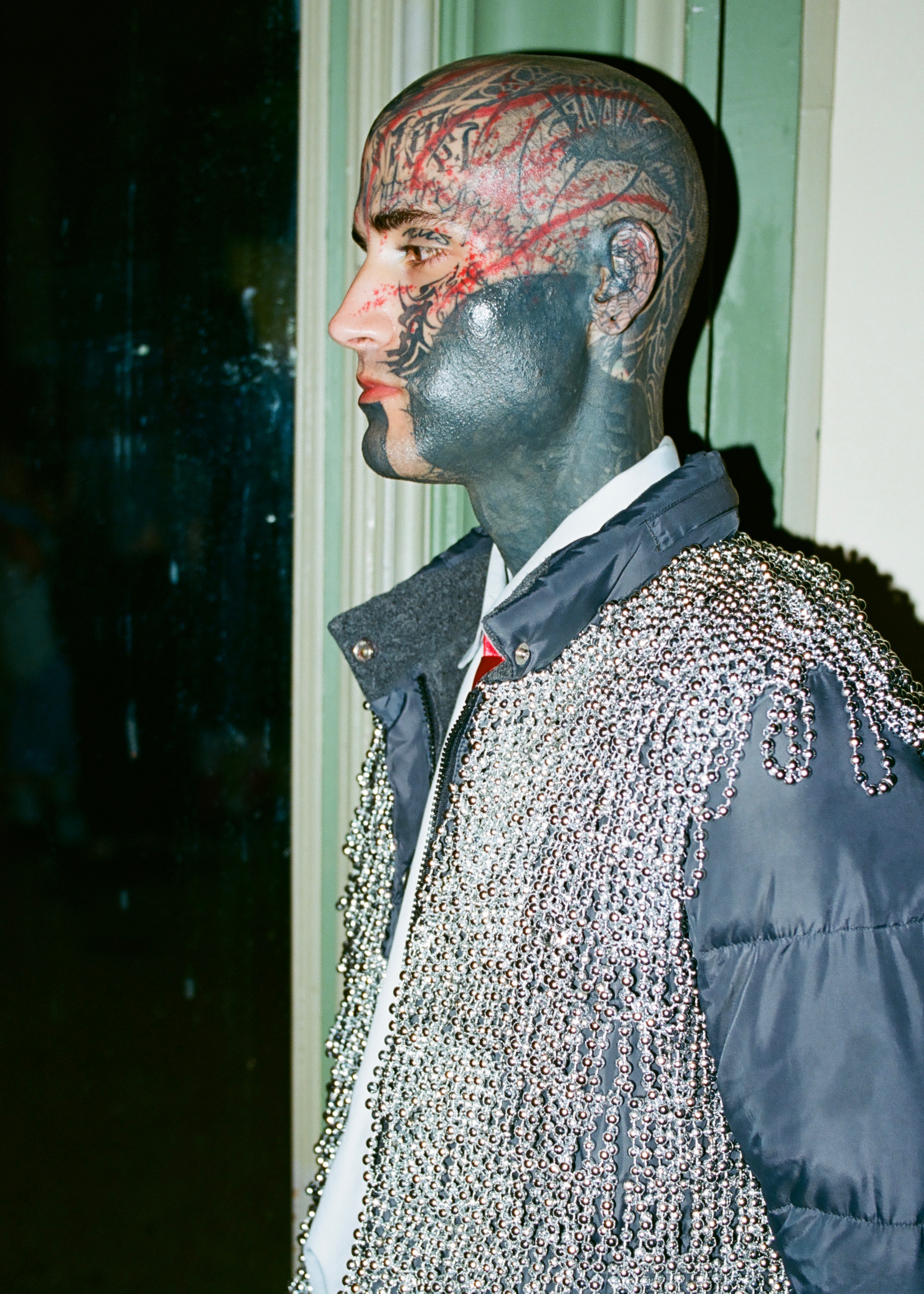
I always think of that line from The Devil Wears Prada where Nigel says, ‘It’s art that you live your life in.’
Carly: It’s big and personal at the same time.
I like how you’ve taken a fairly hot-button thing—I don’t even know if the Romanovs are hot-button, other than the reference to Russia—but you’ve taken it and made it fun. How did you come to the Romanovs? They’re so cool, I’m personally fascinated by them.
Ayla: I just remember finishing season one and we were both sleep-deprived and it was like the day after and Carly, half-asleep in bed, she said, ’I know what I want to do for season two, the Romanovs.’ I was like, that’s what we’re doing.
Carly: There was definitely some sleep deprivation, but I’ve always really been into Fabergé eggs. There’s this tiny section at The Met, it’s really like a hallway between two galleries with a couple cases.
I’m sure the Russians have held onto those for dear life.
Carly: Yeah, it’s a very small section, those imperial eggs are definitely held onto. My mother came in a few years ago to see them at The Met, she’s a docent at the Detroit Institute of Art and learned a lot of art history from her before I went to school, but she came in to see what The Met had because obviously it was a larger collection than the DIA had, even though it’s a tiny hallway. I really fell in love with Fabergé then. Also, I think my sister has been buying little Fabergé mementos and talking to me about it, I don’t know it just leaked in somewhere, but once we started talking about why, it made sense given American-Russian ties. I’m glad it came off as fun despite the hot topic, because we have a lot of fun, and we’re always making fun of everything, and I care about fashion but I also don’t care about fashion, so we can make fun of it.
I used to read fashion magazines before I moved to New York, then I was like, I’m living in a fashion magazine I don’t need it, but I’d always read these fashion people’s little columns and they’d often say, ‘dress with a sense of humor.’ If you approach fashion with a sense of humor it shows and it’s refreshing. It’s like yes it’s Fashion, but also it’s just clothes.
Ayla: We’re always talking about how to find that sweet spot that’s highbrow / lowbrow, like how do we make this sophisticated yet equally tongue-in-cheek, which is the fun part. That’s how we end up with silly ideas like Jane’s look where we made this blown-out bodysuit with gigantic hips and odd proportions.
Carly: We laugh all day long.
Ayla: Watching people try it on, getting the bustle on, the little twerk.
Carly: It’s just like this dummy fake butt. It’s historical but it’s also hilarious. And as serious as we are about what we do and getting our job done, we’re also not serious at all and we’re constantly laughing.
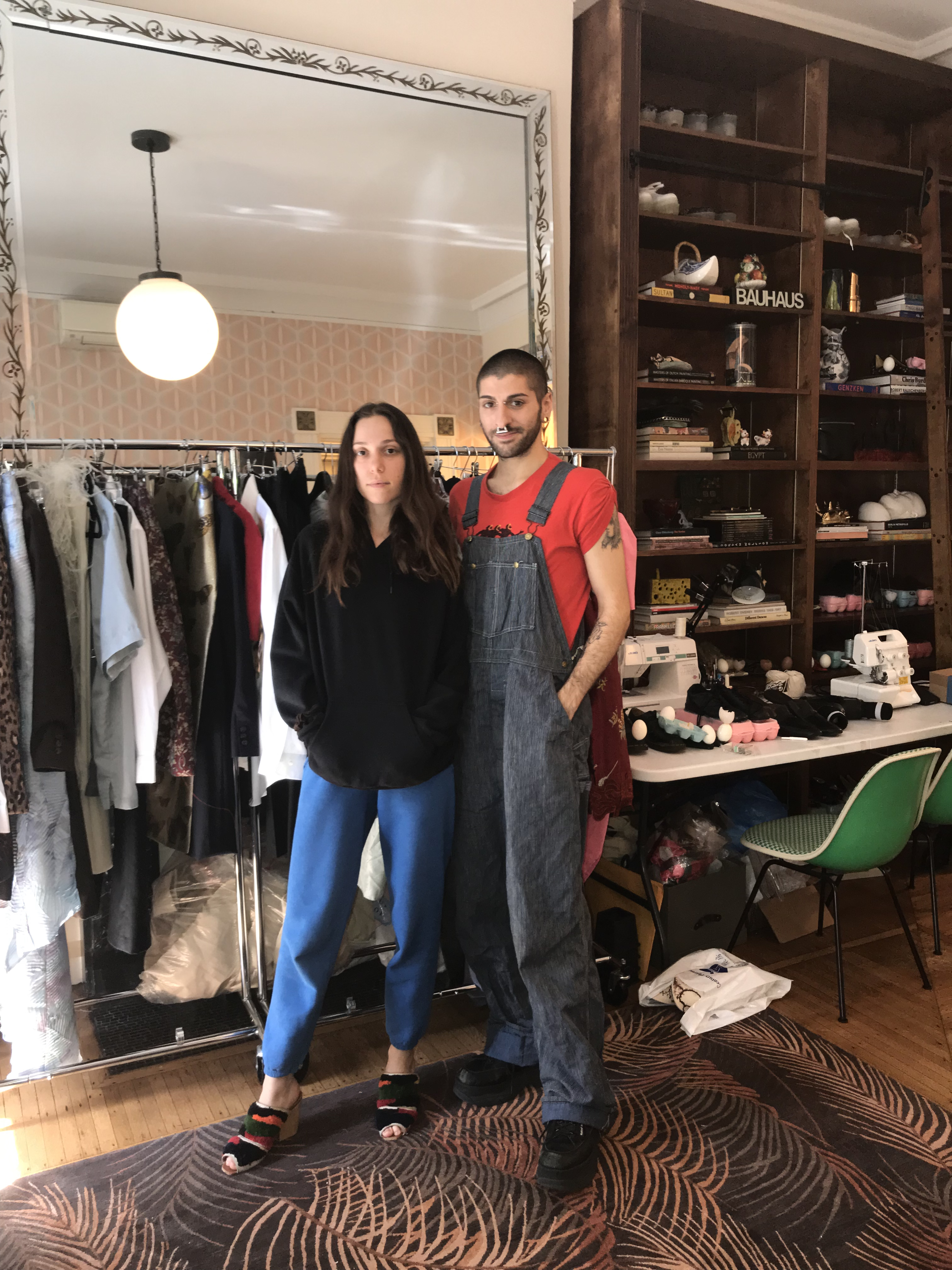
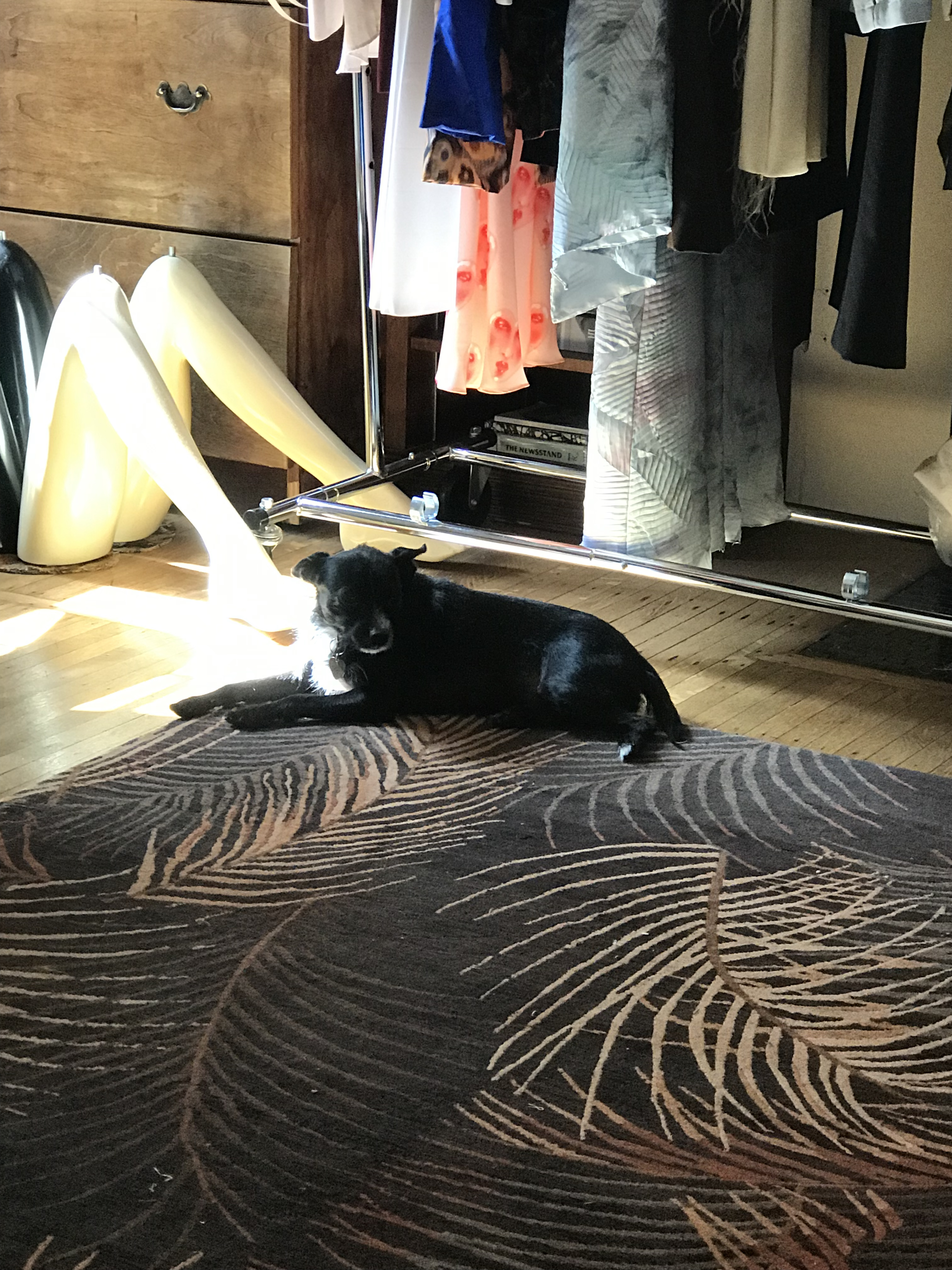
Above: Carly and Ayla in their atelier; their dog, Puppet. Photos by author.
Even the name of the brand itself. How did you come up with the name?
Carly: Puppet is our dog, he’ll come down, he’s playing upstairs with his best friend right now, but he’s a tiny weird Chihuahua mix that by accident we adopted in LA and he’s very cute.
Ayla: We like to say he’s the founder and CEO. This is not our line, it’s his. He owns 51% of the company.
Carly: He’s like the center of our universe. Since adopting him, he’s—not the butt of all jokes because that makes him seem pathetic, but he is—
Ayla: Well he is.
Carly: True. Everything goes back to him. So when we were thinking of the name, we were like, Puppet, then Puppets, then it was like, you know what, let’s just do Puppets and Puppets.
Ayla: It sounds like a weird, almost like theatre troupe, or could be a law office. We were looking at old type fonts like Escada or Caché, those old 80s typefaces that make you think about very serious, sterile corporate-looking, but then we were like, how do we cut into that with something funny.
Carly: If it’s going to be ridiculous, let’s just it twice. That was the whole reason I rsvp’d to the show, I immediately loved the name.
I have a friend who’s entire poetry opus is based on the Muppets, and I invited him. It just sounds fun.
Ayla: One journalist showed up to the show with an actual puppet.
Carla: We dressed her and the puppet.
Ayla: She came by for a t-shirt and a bottom for her puppet.
Carly: We were like, yes, that’s what this is about.
Ayla: It was like, you get it, you get us.
